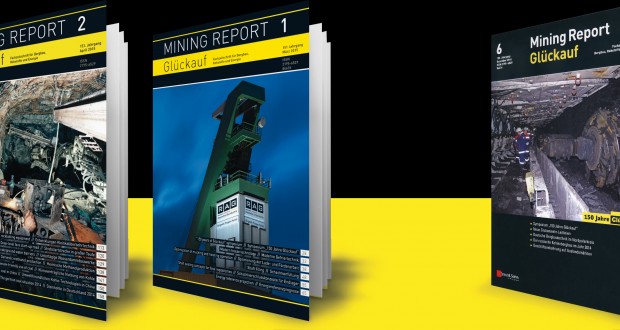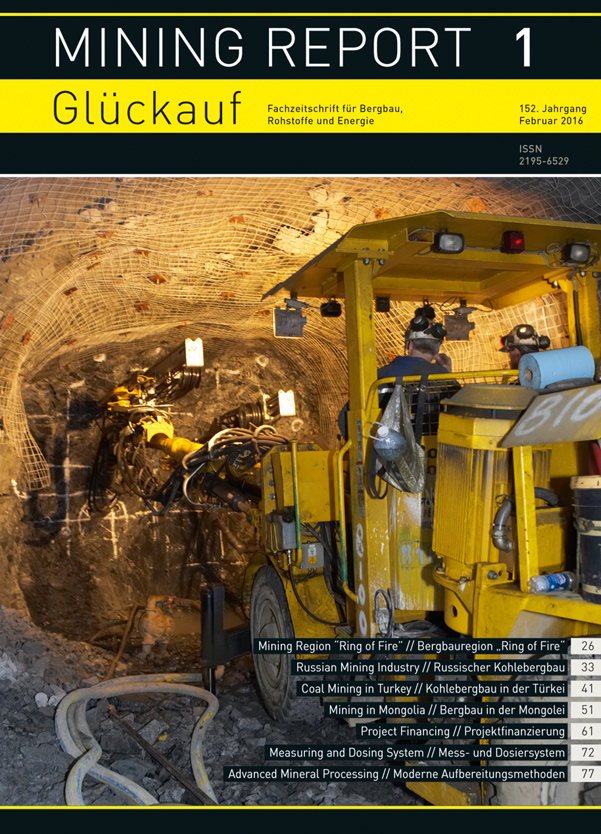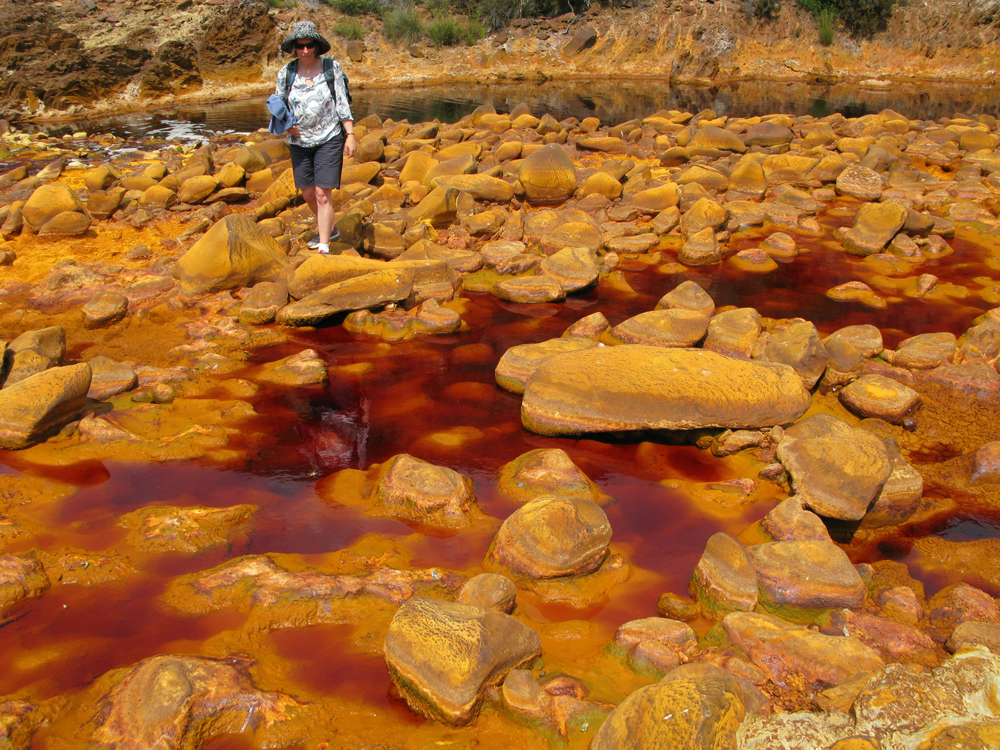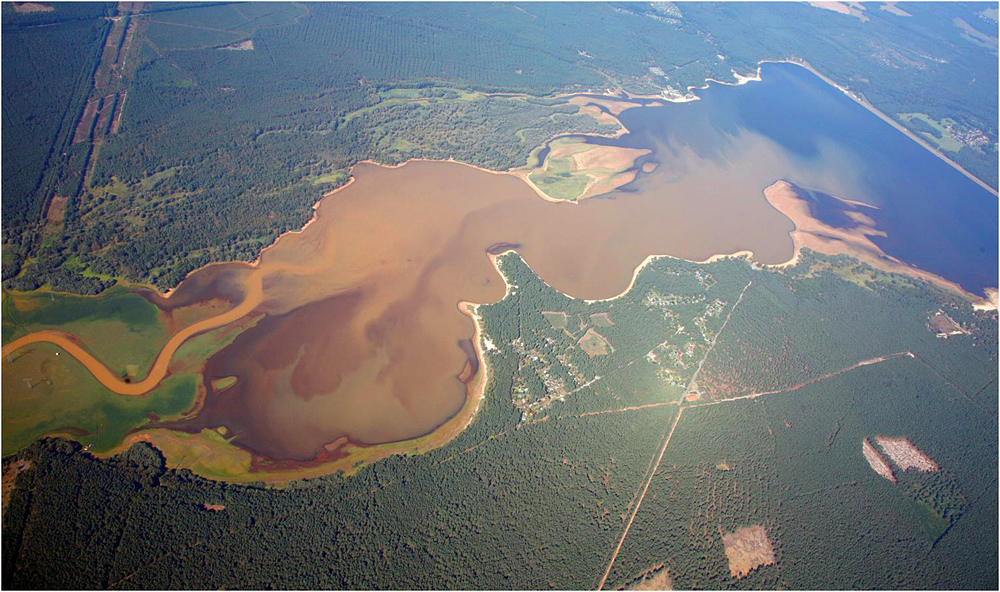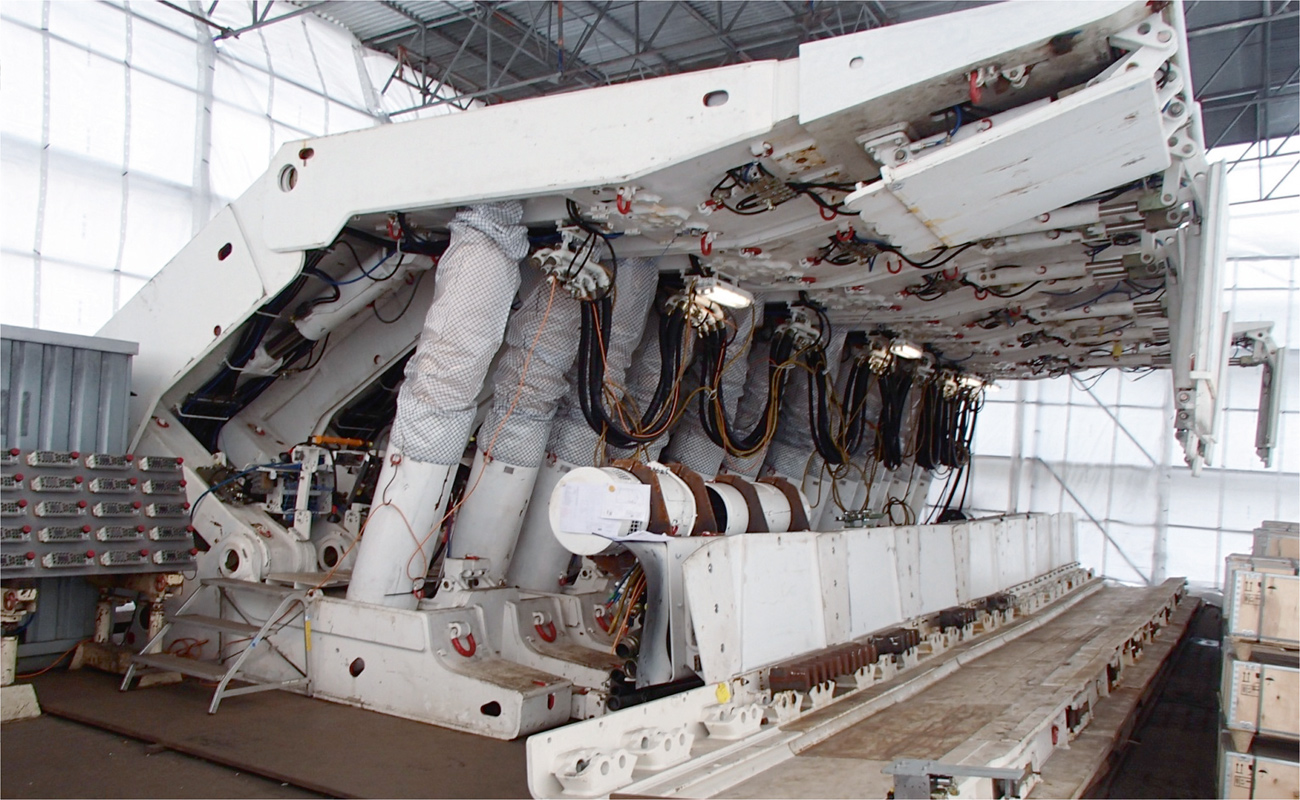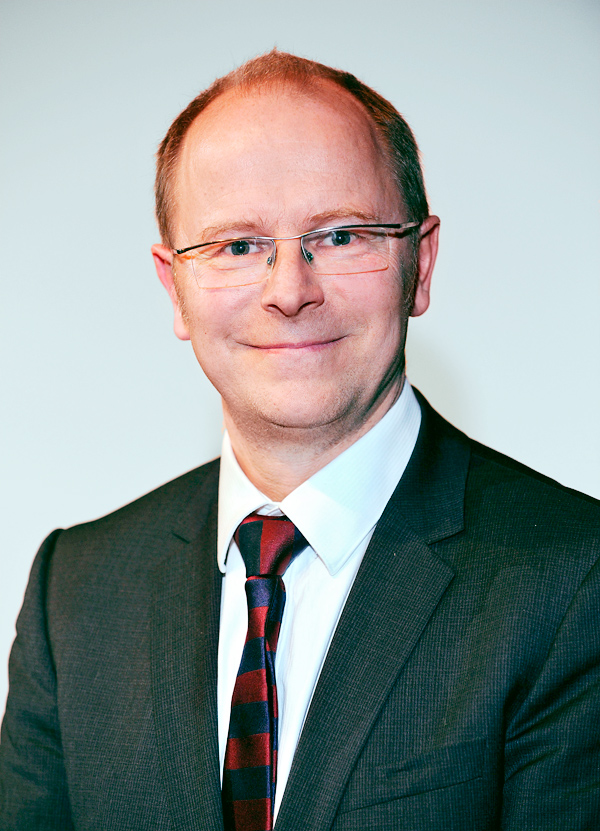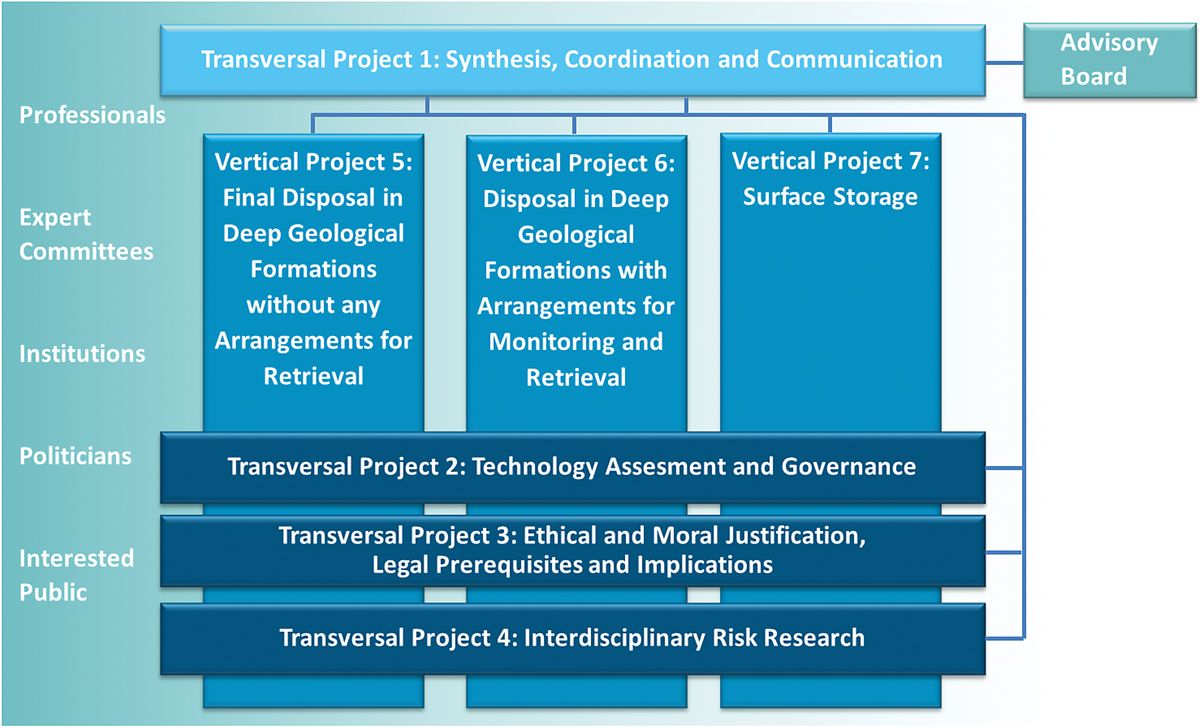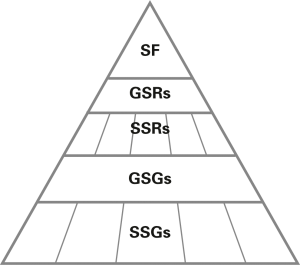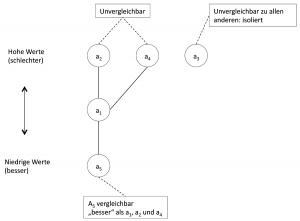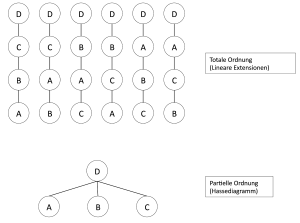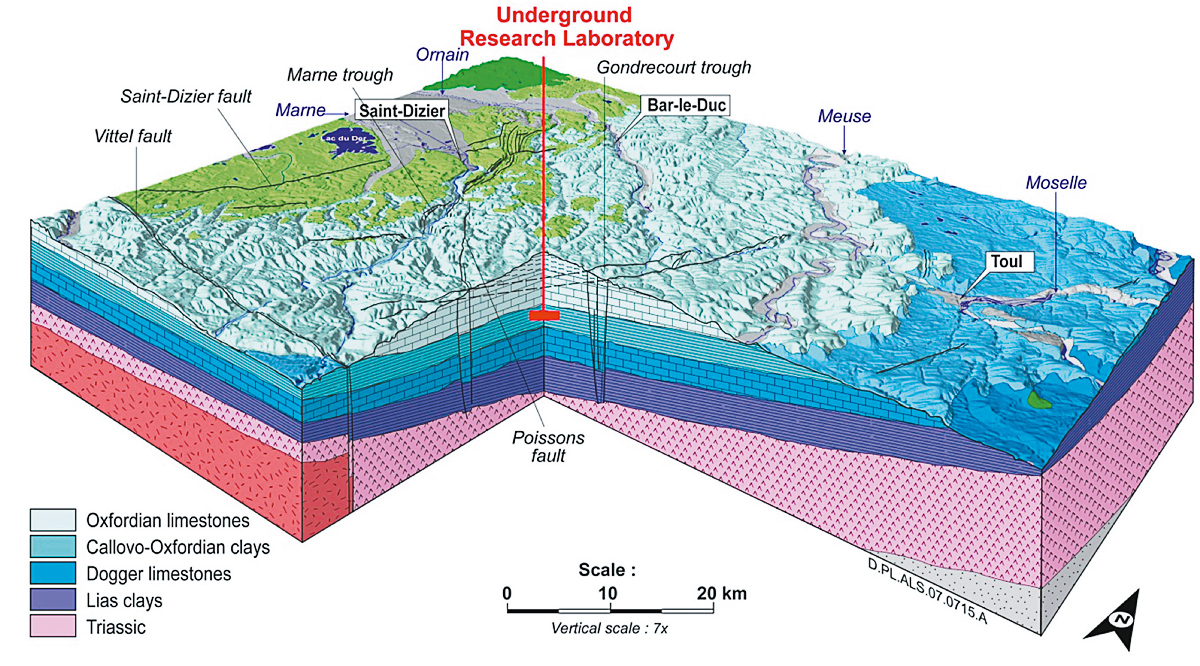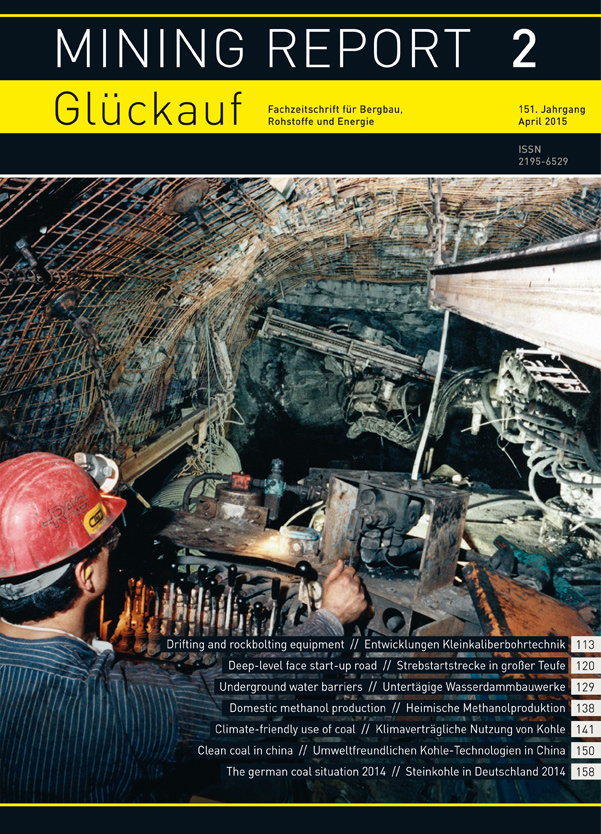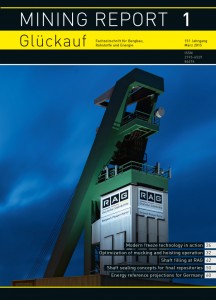Editorial Issue 02_2016
Editorial Issue 02_2016
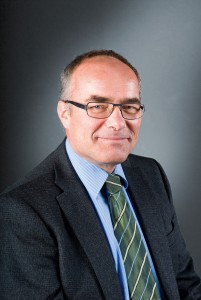
(Chief Editor Mining Report Glückauf)
Editorial
Research generally relies on having its work published if it is to attract attention and have its results more widely discussed. We want to do our bit in this respect by using Mining Report Glückauf as a forum for the mining research institutes and, more particularly, for the mining universities. For this reason papers on university-based mining research can, as of now, be downloaded in full and free of charge via open access on the Mining Report Glückauf website. This facility, which will apply with retroactive effect to all papers of this kind published since the beginning of 2015, will, moreover, help revive the tradition of the research journals that used to be part of the Glückauf family of publications.
From 11 to 17 April Munich will again be playing host to the world’s largest trade fair for construction equipment, bauma 2016. The event is set to attract quite a number of German mining equipment suppliers, who will be showcasing their products in the open-air area and in halls B2 (mineral preparation) and C2, as well as at various trade stands. North Rhine-Westphalia will be represented on a large joint stand in hall C2, which will also have a Mining Report Glückauf desk where show-goers can pick up the latest copy of the magazine along with a special ‘bauma’ edition.
This year’s bauma is being held at a time when the mining and raw materials extraction industries are in deep crisis and this is naturally affecting the business operations of the equipment suppliers. By assessing developments in the international mining market we hope that we can give the industry some grounds for viewing the future in a more optimistic light. As is customary at this time of the year, the global subject matter of this latest issue is complemented by a review of the German coal market in 2015.
In the ore production sector the increasing transition from surface to deep mining, with underground mines now achieving the same levels of production as large-scale surface installations, is imposing a new set of demands, especially on loading and transport technology. Research aimed at improving the reliability and efficiency of operating processes below ground is currently being carried out by manufacturers and universities alike. In this connection the present edition of Mining Report Glückauf describes the investigations that have been conducted into the underlying causes of corrosion on face conveyor chains and examines the measures being employed to mitigate the effects of gas outbursts and to optimise mine pumping and dewatering.
And finally, we have to mention another university with an anniversary to celebrate. Last year Freiberg University of Mining and Technology held a series of events to commemorate its 250th birthday. This year it is the turn of the TFH Georg Agricola University of Applied Sciences in Bochum/Germany, which was first founded exactly 200 years ago.
With my best regards
Dipl.-Ing. Andreas-Peter Sitte
Chief Editor Mining Report Glückauf, Herne
Topics Issue 02_2016
Topics Issue 02_2016
Future since 1816: Celebrating 200 Years University of Applied Sciences TFH Georg Agricola
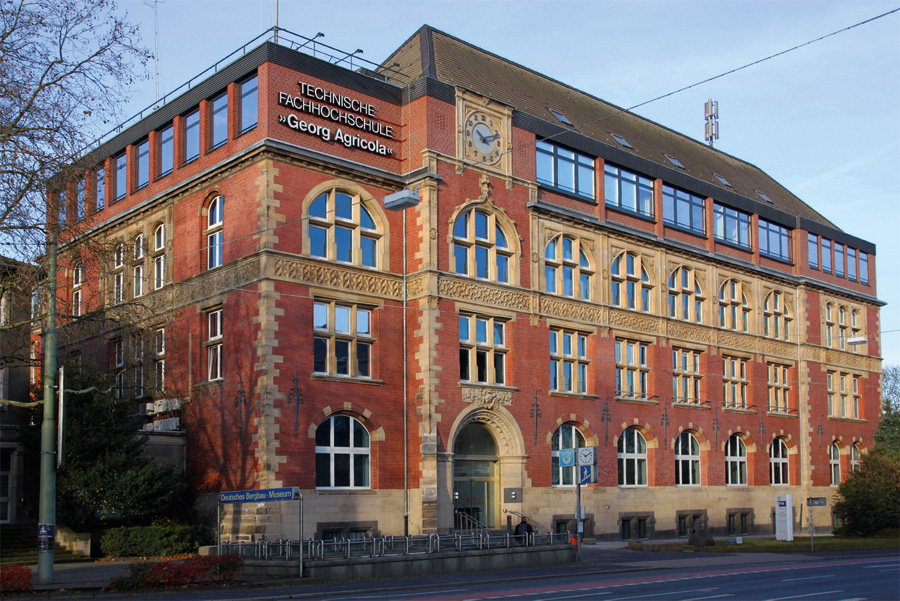
Fig. 3. The central building of TFH Georg Agricola – University of Applied Sciences in the heart of Bochum. // Bild 3. Das Hauptgebäude der Technischen Fachhochschule Georg Agricola in der Bochumer Innenstadt. Photo/Foto: Düppe, TFH
Authors: Prof. Dr. Jürgen Kretschmann, Präsident, und M. A. Stephan Düppe, Pressesprecher der Technischen Fachhochschule (TFH) Georg Agricola, Bochum
Read moreDevelopments of the International Mineral Markets Considering the Chances of German Mining and Conveying Technology
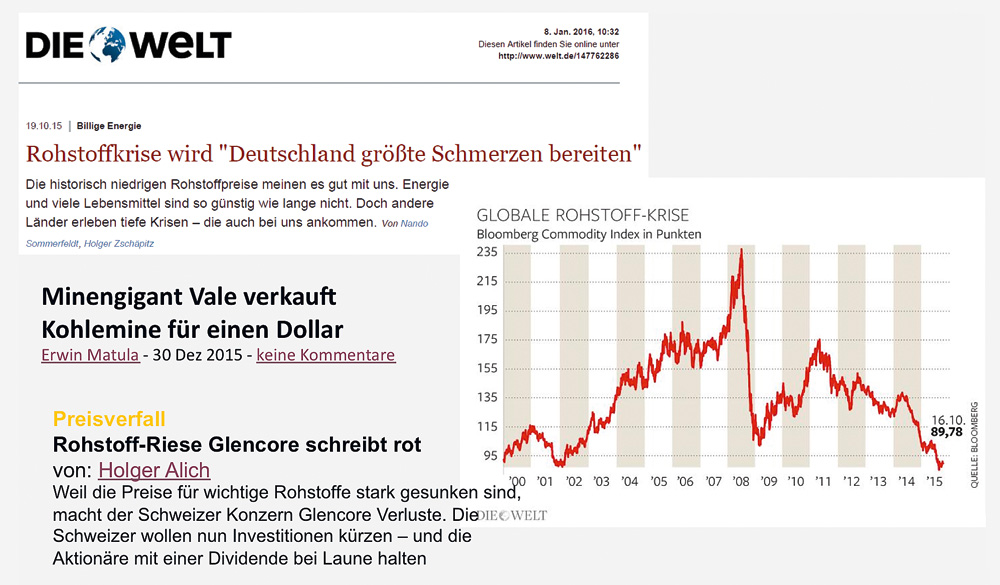
Fig. 1. Press news on minerals crisis. // Bild 1. Pressemeldungen zur Rohstoffkrise. Source/Quelle: Welt, Handelsblatt
Author: Dr.-Ing. Martin Wedig, Geschäftsführer der Fachvereinigung Auslandsbergbau und internationale Rohstoffaktivitäten (FAB), Berlin
Read moreThe German Coal Situation 2015
Following a lengthy period of almost unbroken growth the coal market was seen to undergo a slight contraction in 2015. World market prices continued to fall and in some cases reached an all-time low. In Germany there was only a slight downturn in coal consumption, which was mainly due to a period of temporary stability in supplies to the electricity production sector, though the general trend here is still downwards. The German mining industry, where the phasing-out process is still under way under socially acceptable terms, reached another key milestone with the scheduled closure of Auguste Victoria colliery at the end of 2015. Germany is now left with just two operational coal mines and the industry is now forging ahead with its plans for the post-mining era.Authors: Dipl.-Ökonom Dr. Kai van de Loo, Dezernent „Politik und Statistik“ und Dipl.-Ing. Andreas-Peter Sitte, Dezernent „Kommunikation“, Gesamtverband Steinkohle e.V. (GVSt), Herne
Read moreUnderground Loading and Transport Systems and the Challenges Posed by Increased Production Levels at Ore Mines around the World
Developments in production levels at ore mines as a result of the transition from large opencast mines to deep mining have forced mine operators and machinery manufacturers towards greater modernisation and innovation, especially when it comes to methods and technology for ore loading and transport. Large-scale opencast mines producing copper ore, such as Grasberg and Chuquicamata, employ modern, highly efficient surface mining techniques. However, as Chuquicamata and other large mines have shown, this kind of technology tends to reach its limits at working depths of more than 1,000 m and as a result any further extraction can only be carried out cost effectively by switching to deep mining methods. There are also examples where deposits at existing mines have been developed to achieve production rates similar to those of opencast operations, such as at the LKAB-owned Kiruna mine in Sweden.Author: Dipl.- Ing. Karl-Heinz Wennmohs, Mining & Rock Excavation Technique (M & R), Witten
Read moreAssessing the Corrosion Risk to Coal-Face Chains
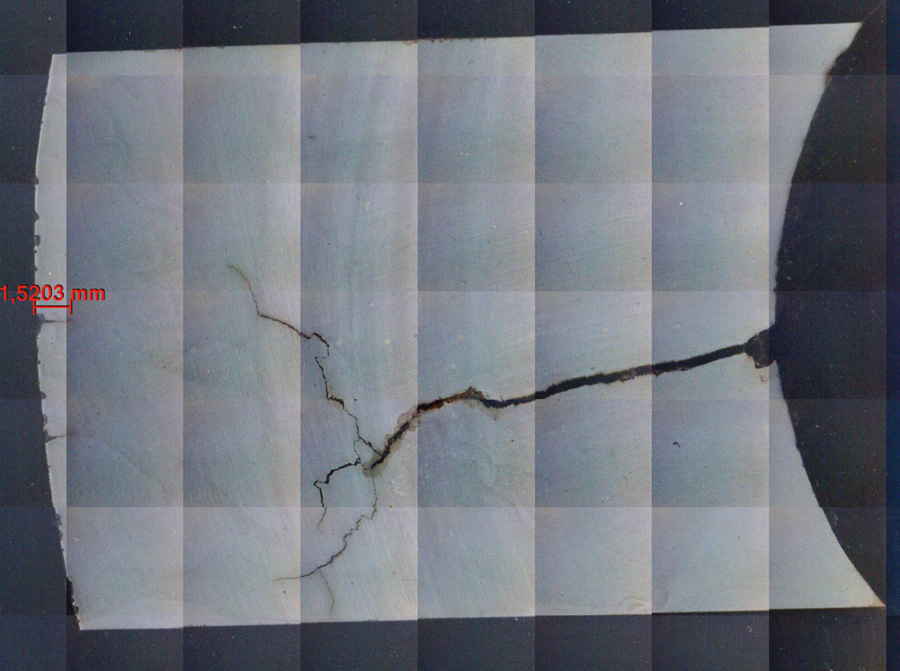
Fig. 7. Corrosion failure at a chain link. // Bild 7. Korrosionsversagen an einem Kettenglied. Source/Quelle: THIELE
Authors: Dr.-Ing. Günther Philipp, Geschäftsführer, und Alexander Gerth, M.Sc., THIELE GmbH & Co. KG, Iserlohn
Read moreUsing a Hierarchical Approach for the Dilution of Gases
In order to ensure safe underground working conditions, especially in case of gas outbursts, it is essential to develop ventilation concepts for the necessary dilution of harmful gases with respect to the occurring gases, gas concentrations and general operational conditions as to cross-sectional areas and existing ventilation systems. Therefore, a concept for a hierarchical approach for the dilution of gases was developed, combining Computational Fluid Dynamics (CFD) and Ventilation Network modeling. For the two-phase gas/air flow that occurs during a gas burst, a CFD simulation was performed and the behavior of the gas burst and its impact on the existing ventilation were analysed. Based on the simulation, various measures for the dilution of air dependent upon the severity of the gas burst as well as the geometrical conditions were tested and evaluated according to their efficiency. An integration of the simulation results into the existing superior ventilation network calculations was then performed with the Mine Ventilation Simulation Software VentsimTM, a tool that provides compressible ventilation system calculations and is capable of delivering the requirements for the development of quick, effective and safe ventilation concepts.Authors: Dr.-Ing. Elisabeth Clausen und M.Tech. Amit Agasty, Institut für Bergbau, Technische Universität (TU) Clausthal, Clausthal-Zellerfeld
Read moreAbout Possibilities to Improve Current Outburst Hazard Prediction Based on Updated Mechanism of Coal and Gas Outburst
In this paper the problem of coal and gas outburst – the coal pit’s most complex and dangerous induced geodynamic phenomenon – occurrence and development has been considered in details. Based on the theoretical and experimental researches it has been shown that this phenomenon may occur in full strength only with sufficient quantity of total potential energy available in the massif’s face area together with the conditions required for development of each stage of the phenomenon. However, the main condition shall be occurrence and development of the intensive opening and extension of cracks quasiparallel to the seam’s exposed surface and saturation of these cracks with pressurised free gas in the face area.Updating of the coal and gas outburst process allows to improve current prediction of the mine opening hazards with respect to the coal and gas outbursts.
Authors: Prof. Dr.-Ing. Viktor Semenovich Zykov, Prof. Dr.-Ing. Hee Un Lee
Read moreOptimizing Long-term Mine Water Management of Mining Sites with the Help of Directional Drilling and Liner Technology
The exploitation of raw materials in opencast or subsurface mining is usually followed by an impact on the water balance. To guarantee a secure and efficient production process the water must be drained. The environment-friendly mine water management should be implemented during the active mining as well as in the post-mining phase. Moreover, abandoned mine sites are often marked by unsolved hydrogeological questions.This article deals with a number of options to optimize the mine and geothermal water management on the basis of liner technology. This proven technology can be adapted on the specific hydrochemistry, on the construction form and the conditions of the given infrastructure. Also in combination with directional drilling and horizontal or inclined bore holes, the liner technology can be used.
Authors: Prof. Dr.-Ing. Peter Goerke-Mallet, Forschungszentrum Nachbergbau der Technischen Fachhochschule (TFH) Georg Agricola, Bochum, Frank Mersmann, SAERTEX multicom GmbH, Saerbeck, Thorsten Beermann, Beermann Bohrtechnik GmbH, Hörstel-Riesenbeck, Dr.-Ing. Max Thomas Stöttner, Hochschule Osnabrück, Osnabrück
Read moreEditorial Issue 01_2016
Editorial Issue 01_2016

(Chief Editor Mining Report Glückauf)
Editorial
The present issue marks the start of Mining Report Glückauf’s second year of publication since its re-acquisition by the German Coal Association. Looking back over 2015 it can be said that the decision to introduce thematic categories, as well as to devote a special section to ISSA Mining and place a greater focus on non coal mining themes, has proved to be the right one. This has been confirmed not only by the positive trend in subscriber numbers but also through individual comments that have come from our readership. We would of course be very pleased if more readers could let us know what they think about the makeup and content of the magazine and what they expect from the editorial team. This can best be done by visiting our website (www.mining-report.de).
The focus of this issue of Mining Report is on mining regions that have played a major role at international level for many years and others that have real potential for the future. Canada has enjoyed a long tradition as a mining nation and we shall be looking at developments in the ‘Ring of Fire’ in the Province of Ontario and discussing what kind of conditions investors and mining suppliers can expect from an involvement in this area. Russia, which has been a traditional mining market for some years, is now in the midst of an economic recession that is also affecting the mining industry and the coal sector. This situation is exacerbated by the political sanctions being imposed by the West as a consequence of Russia’s policy towards Ukraine. Yet in spite of these difficulties the Russian government remains intent on pushing ahead with an expansion of coal production.
Turkey is an important future market for the mining sector and we shall be reviewing the prospects for mining operations in that region, with the focus on coal extraction. Another mining country with real potential is Mongolia and we also include a paper outlining the latest developments in that region and the various measures of support now being provided.
No overseas project commitment is possible without secure financing. We will be discussing what kind of players are now active in the commodities financing sector and will be examining the different forms of capital that can be used for specific project phases.
And of course we will not be leaving mining technology out of the equation. Interesting developments that could well help reduce operating costs include a measurement and metering system for coal-face hydraulic fluids and new methods of ore processing.
Finally I come to the ISSA Mining section: This includes a look back at the International Mining Rescue Body Conference held in Hanover in September 2015 along with a description of one particular safety management system that could serve the international project industry very well in its efforts to meet occupational safety and environmental protection requirements.
With my best regards
Dipl.-Ing. Andreas-Peter Sitte
Chief Editor Mining Report Glückauf, Herne
Topics Issue 01_2016
Topics Issue 01_2016
The present issue marks the start of Mining Report Glückauf’s second year of publication since its re-acquisition by the German Coal Association. Looking back over 2015 it can be said that the decision to introduce thematic categories, as well as to devote a special section to ISSA Mining and place a greater focus on non coal mining themes, has proved to be the right one. This has been confirmed not only by the positive trend in subscriber numbers but also through individual comments …
Read moreWith my best regards // Mit freundlichem Glückauf
Dipl.-Ing. Andreas-Peter Sitte
Chief Editor Mining Report Glückauf, Herne
Current Developments in the Russian Mining Industry
The Russian economy is set to shrink by 3.5 to 4.0 % in 2015 and this recession is expected to continue through 2016. Oil prices are now at an all-time low and are predicted to remain so for the time being. The conflict in eastern Ukraine has flamed up again and this makes any lifting of Western sanctions unlikely. The prospects for economic recovery in Russia therefore remain poor. Yet while Moscow seems to be intent on forcing an upturn in the fortunes of the coal industry, there were by the end of 2015 clear warning signs for the government. Russian coal exports were on the decline throughout the year and imports of coal to China, including those from Russia, were dramatically cut back, while renewables based electricity is growing in popularity, even in Russia. Despite all this the Russian Government remains resolved to invest heavily in expanding coal production and to subsidise the building of power stations along with the coal export sector.Author: Peter v. Hartlieb, Bereichsleiter Netzwerk Bergbauwirtschaft, EnergieAgentur.NRW, Düsseldorf
Read morePotentials of the Mining Region “Ring of Fire” in the Province of Ontario
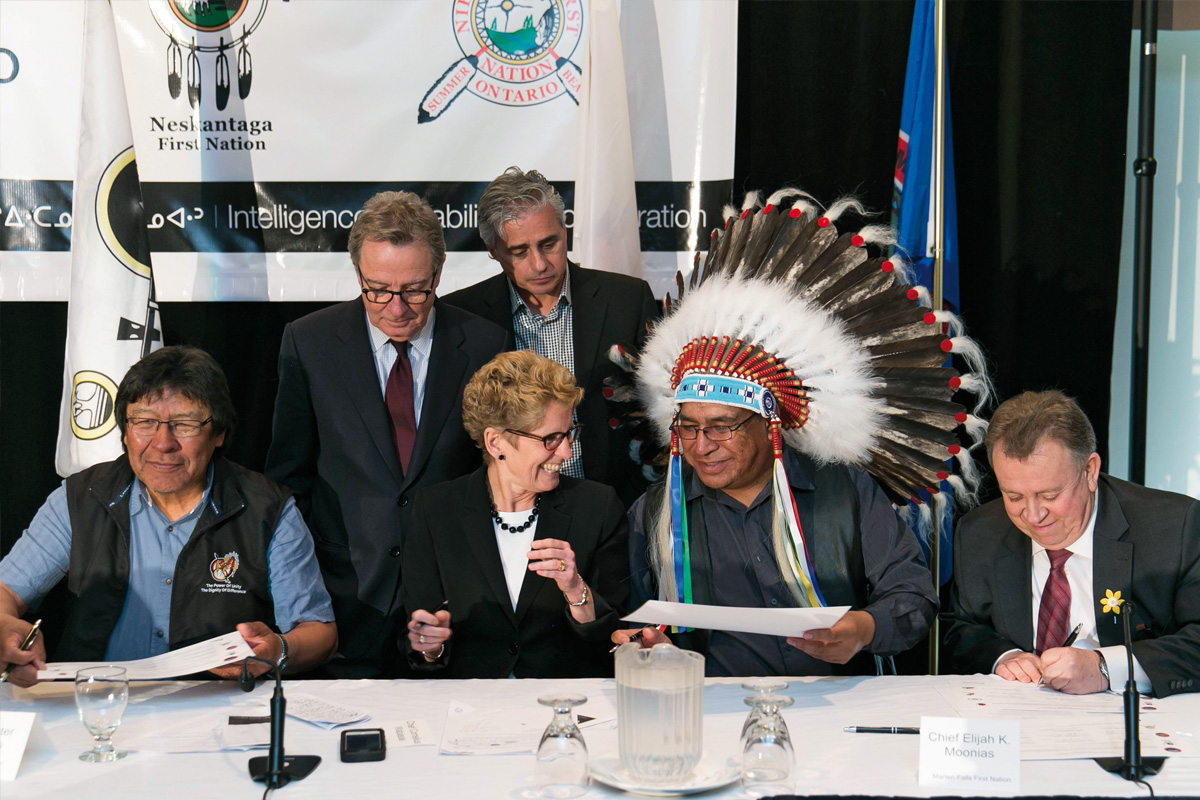
Fig. 4. Ontario and Matawa First Nations Regional Framework Agreement. // Bild 4. Ontario und Matawa First Nations Regional Framework Agreement. Photo/Foto: MEDEI
Ontario is Canada’s economic powerhouse in many respects. It is the most populous province, with a population of 14 million people. 39 % of all Canadians live in Ontario and 46 % of the country’s manufacturing output is generated here. It is also the financial center, with 45 % of all financial services employment in Canada. The development of the mining region Ring of Fire in Ontario´s north started in 2001 and not only influences the economical forces of the province but those of the whole country.
Author: Terrie Romano, Konsulin Wirtschaftsangelegenheiten der Provinz Ontario, Konsulat von Kanada, München
Read moreFinancing of International Mining Projects
As an industrial nation, Germany is obliged to safeguard its supplies of natural resources by obtaining a number of different raw materials that are not available, or cannot be supplied in sufficient quantities, on the domestic market. From a German perspective the development of overseas mineral deposits therefore plays a vital role when it comes to externally sourced commodities, and particularly energy resources, metals and/or metal ores and a number of industrial minerals. Although there are just a few German companies currently engaged directly in their own foreign mining operations, including AMG Mining AG (Graphit Kropfmühl), Cronimet Mining AG and K+S AG, it would not be possible to develop new mineral deposits without some form of financial backing. This applies equally to projects that contribute indirectly to the supply of raw materials through intermediaries or purchasing agreements.The following paper presents a brief outline of the different types of players currently involved in the commodity financing business and uses the life cycle of a natural-resources project to show the different forms of capital that can come into play for the various phases of the operation. Different forms of project development are depicted, based both on equity capital and on debt capital. When it comes to debt capital the focus is put on the different types of financing available for project companies (junior miners) on a non-recourse basis, as this form of mining project development ideally illustrates the challenges that can arise in the field of project funding.
Author: Tim Langenbach, Vice President Metals & Mining, KfW IPEX-Bank GmbH, Frankfurt/M.
Read moreMining in Mongolia – Everything is Possible
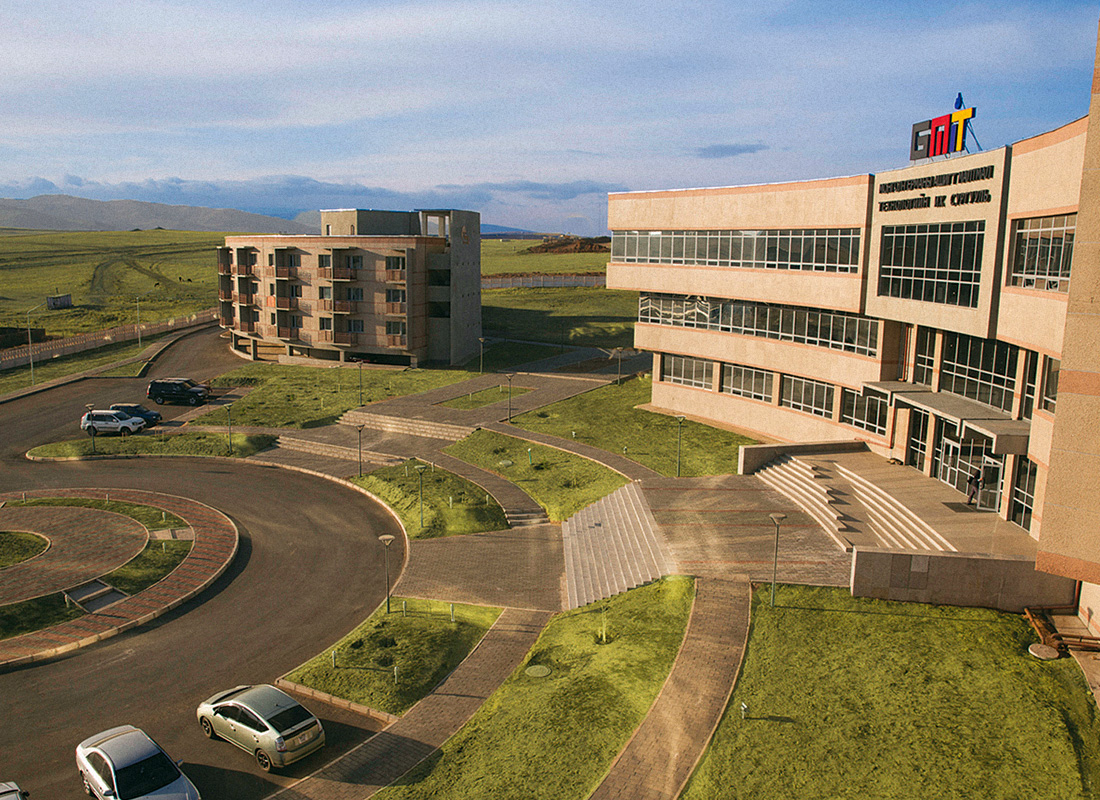
Fig. 2. German-Mongolian Institute for Resources and Technology (GMIT). // Bild 2. Deutsch-Mongolische Hochschule für Rohstoffe und Technologie (DMHT). Foto: DMHT
After presenting a brief description of the challenges that Mongolia is currently facing, the paper goes on to discuss four of the 20 or more mining projects that are under way in the country at the present time. The three ventures in question are at Oyu Tolgoi, Tavan Tolgoi, Erdenet and Tsagaan Suvarga. Germany has always enjoyed close economic ties with Mongolia and this explains the presence of two German business institutions, whose functions are described in more detail below. The revitalised German-Mongolian resource partnership, which is backed up by well-connected German-Mongolian institutions, offers great prospects for German companies on the Mongolian market.
Author: Rebecca Schmücking, Coordinator German-Mongolian Economic Committee, German-Mongolian Business Association (DMUV), Ulaanbaatar, Mongolia
Read moreRedefining Deposit’s Reserves by Advanced Mineral Processing Approaches
The estimation of a deposit’s reserves depends on the geological and mineralogical characteristics as well as the market value of the product. It is also influenced by the mining and mineral processing technology applied and the respective costs generated. Ongoing challenges such as decreasing prices, lower grade ores, rising labour and equipment costs call for new approaches. This paper highlights some of those in the processing of ores such as selective comminution or confined particle-bed breakage which might lead to increased recovery and reduced costs. Those advanced mineral processing approaches are based on in-depth knowledge of the comminution behaviour of the ores. Such knowledge is gained through investigation of the minerals using Mineral Liberation Analyser or Quantitative Microstructural Analysis. The option of recovering even low grade ores economically using advanced mineral processing technologies may finally lead to a re-evaluation of the reserves of deposits. The paper is based on the author´s presentation on the 26th Annual General Meeting and Conference SOMP 2015 at 24th June 2015 in Freiberg/Germany.Author: Prof. Dr.-Ing. Holger Lieberwirth, Institute of Mineral Processing Machines, TU Bergakademie Freiberg, Freiberg/Germany
Read moreCoal Mining in Turkey
Over the past ten years, thanks to billions in loans from the International Monetary Fund, a consistent policy of austerity, and strict spending discipline, Turkey has managed to avoid national bankruptcy and has experienced an economic boom with growth of up to 9 %. A stable political situation, economic reforms, low wages and the privatisation of most state-owned companies have been attracting Turkish and international investors for a decade. Protests against the government’s hard line did cost the country points in terms of its global reputation and in the economy, but they did not raise any prolonged doubts among investors regarding Turkey’s political stability. In addition to China, Turkey is one of the most important future markets for German manufacturers of mining machines and for German mining consultancy firms. This paper provides an overview of the status and outlook for mining activities in Turkey, and pays particular attention to the production of coal for Turkey’s energy supply.Authors: Peter v. Hartlieb, Bereichsleiter Netzwerk Bergbauwirtschaft, EnergieAgentur.NRW, Düsseldorf, Ulrich Ruppel, Geschäftsführer, und Dirk Wagner, Senior Project Manager, DMT Consulting GmbH, Essen
Read moreMeasuring and Dosing System for Operating Fluids Used in Longwall Hydraulic Systems for the Economic Optimisation of Shield Supports
The estimation of a deposit’s reserves depends on the geological and mineralogical characteristics as well as the market value of the product. It is also influenced by the mining and mineral processing technology applied and the respective costs generated. Ongoing challenges such as decreasing prices, lower grade ores, rising labour and equipment costs call for new approaches. This paper highlights some of those in the processing of ores such as selective comminution or confined particle-bed breakage which might lead to increased recovery and reduced costs. Those advanced mineral processing approaches are based on in-depth knowledge of the comminution behaviour of the ores. Such knowledge is gained through investigation of the minerals using Mineral Liberation Analyser or Quantitative Microstructural Analysis. The option of recovering even low grade ores economically using advanced mineral processing technologies may finally lead to a re-evaluation of the reserves of deposits. The paper is based on the author´s presentation on the 26th Annual General Meeting and Conference SOMP 2015 at 24th June 2015 in Freiberg/Germany.Authors: Ulrich Schmitz, Dr. Hans-Hermann Hunfeld, Tiefenbach Control Systems GmbH
Read moreEditorial Issue 06_2015
Editorial Issue 06_2015

(Chief Editor Mining Report Glückauf)
Editorial
In the first issue of the year I said that the post-mining theme would feature much more prominently than before. I shall now be delivering on this promise. The search for suitable papers quickly showed that this particular topic is simply too diverse for all its aspects to be covered at a single stroke. For this reason the latest edition of Mining Report Glückauf will initially devote itself to water management and will attempt to do this by examining the problem from different perspectives, at different locations and from the viewpoint of different branches of the mining industry. Themes such as how to handle former mining sites and develop alternative-use concepts, and how to manage surface subsidence during the post-mining era, will be covered in future issues.
The multidimensional nature of the post-mining theme includes the news that in 2012 the University of Applied Sciences Georg Agricola joined with the RAG Foundation in establishing an endowed professorship for ‘Geotechnical engineering and post-mining’ and then more recently, on 22 October 2015, opened the Research Centre Post-Mining on the University campus, the only institution of its kind anywhere in the world. This Centre will bundle the expertise that is needed to be able to shape and manage the consequences of the mining industry in a technical, economic and sustainable way.
This know-how includes an awareness of the environmental impact of the mineral substances that are present in colliery waste water and mine tailings. The internationally accepted term for this is ‘acid mine drainage’. A number of papers will focus on this theme and on other issues based on examples taken from water management projects in the Ruhr coalfield, former uranium mining sites in Saxony and Thuringia, and those parts of the Lausatia region that have been affected by opencast lignite mining.
The final contribution is a review of this year’s Annual Report by the German Coal Association. This too examines the problems of the post-mining era, focusing in this case on the range of tasks facing the RAG coal company following the closure of its colliery operations.
These technical papers are preceded by two retrospective reports. The first concerns Auguste Victoria colliery in Marl, which RAG is due to close at the end of 2015 as part of the company’s mine-planning response to the agreed withdrawal of mining subsidies. This provides an appropriate opportunity to look back at the eventful history of the colliery and to assess its importance for the town and surrounding region. The second relates to the Freiberg University of Mining and Technology, which celebrates its 250th anniversary this year. Reason enough to review the history of the TU Bergakademie Freiberg – the oldest university of mining and metallurgy in the world.
With my best regards
Dipl.-Ing. Andreas-Peter Sitte
Chief Editor Mining Report Glückauf, Herne
Topics Issue 06_2015
Topics Issue 06_2015
In the first issue of the year I said that the post-mining theme would feature much more prominently than before. I shall now be delivering on this promise. For this reason the latest edition of Mining Report Glückauf will initially devote itself to water management and will attempt to do this by examining the problem from different perspectives, at different locations and from the viewpoint of different branches of the mining industry.
With my best regards // Mit freundlichem GlückaufDipl.-Ing. Andreas-Peter Sitte
Chief Editor Mining Report Glückauf, Herne
Research Institute of Post-Mining, TFH Georg Agricola University of Applied Sciences, Bochum – Strategies, Activities and Research Priorities
Learn morePredicting Acid Mine Drainage: Past, Present, Future
Learn moreThe Groundwater Raise in Lignite Mining Induced Areas in Lusetia – Actions taken to reduce the Follows Ups
Auguste Victoria Colliery – a Reliable Partner through the Years

250 Years of the Bergakademie Freiberg, the World’s Oldest Mining University
Author: Prof. Dr.-Ing. habil. Gerd Grabow, Freiberg
Water Authorities in Structural Transformation in the Rhenish-Westphalian Industrial Belt – a (new) Perspective with the Decline of the Mining Industry
Learn moreDensity Stratification in Mine Water Bodies as a Contribution to Better Long-Term Water Management
Learn moreWater Management – a Core Task of the Wismut Remediation Programme
Learn moreCoal 2015 – Acting Responsibility. Creating new Perspectives.
Learn moreEditorial Issue 05_2015
Editorial Issue 05_2015
 Andreas-Peter Sitte (Chief Editor Mining Report Glückauf)
Andreas-Peter Sitte (Chief Editor Mining Report Glückauf) Editorial
In this present edition of Mining Report Glückauf I shall pick up on a number of topics, some of which also featured at various conferences and symposia held over the summer. At this point I should like in particular to mention two conferences that Germany has hosted this year. The first of these was the Aachen International Mining Symposium (AIMS) at the end of May, which for the last time was held under the direction of Professor Per Nicolai Martens. Thanks in no small measure to the efforts of Prof. Martens over many years these events have now acquired a high international standing. And this is one of a number of reasons why the German mining community owes him a debt of gratitude. In handing over the reins of the Mining Engineering Department at RWTH Aachen University to his successor, Prof. Bernd Lottermoser, he has also entrusted the future of the AIMS to his care. The second event that I wish to highlight is the Annual Conference of the Society of Mining Professors (SOMP), which this year drew mining academics from all over the world to the venue in Saxony to celebrate the 150th anniversary of the founding of the Freiberg Academy of Mining. The fact that this conference is being held in Germany in the first place can be taken as evidence of the global recognition of the mining skills and expertise that we have developed here. It is against this background that the themes selected for this edition have to be seen. Occupational safety and process efficiency are key areas of activity for every sector, not just the mining industry. The paper under the heading of ISSA Mining illustrates that both these factors have to work hand in hand if economic success is to be achieved. Cross-linking coal face systems with a high level of automation helps improve efficiency and industrial safety just as much as measures aimed at a self-sustaining mine control technology. In underground hard rock mining the use of modern rail transport installations makes for increased productivity and constitutes a cost-effective alternative to other types of haulage systems. Individual technical improvements, such as re-designed sprockets for chain scraper conveyors, help to reduce material wear and lower maintenance costs. We have also included an article that looks back at the 93-year history of FABERG, the mining standards committee, which is to cease operating at the end of 2015. Security of supply is a theme that also features in this issue. In this context, a coal-industry perspective of the 2014 Energy Study produced by the Federal Institute for Geosciences and Natural Resources (BGR) is supplemented by an article that examines the criteria for the exploration and extraction of the rare earth elements that are so crucial for today’s new technologies. With my best regards
Dipl.-Ing. Andreas-Peter Sitte Chief Editor Mining Report Glückauf, Herne
Topics Issue 05_2015
Topics Issue 05_2015
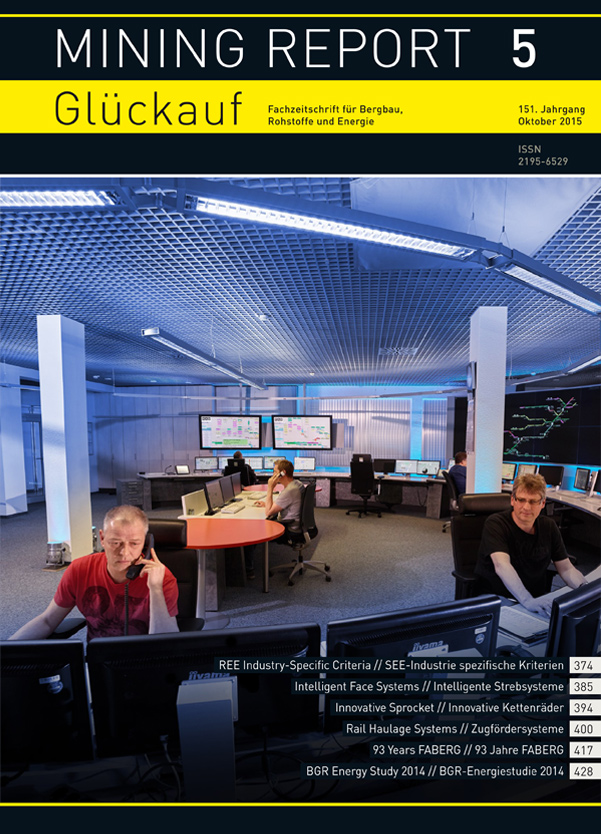
Occupational safety and process efficiency are key areas of activity for every sector, not just the mining industry. The paper under the heading of ISSA Mining illustrates that both these factors have to work hand in hand if economic success is to be achieved. Cross-linking coal face systems with a high level of automation helps improve efficiency and industrial safety just as much as measures aimed at a self-sustaining mine control technology. In underground hard rock mining the use of modern rail transport installations makes for increased productivity and constitutes a cost-effective alternative to other types of haulage systems. Individual technical improvements, such as re-designed sprockets for chain scraper conveyors, help to reduce material wear and lower maintenance costs. We have also included an article that looks back at the 93-year history of FABERG, the mining standards committee, which is to cease operating at the end of 2015. Security of supply is a theme that also features in this issue. In this context, a coal-industry perspective of the 2014 Energy Study produced by the Federal Institute for Geosciences and Natural Resources (BGR) is supplemented by an article that examines the criteria for the exploration and extraction of the rare earth elements that are so crucial for today’s new technologies. Mit freundlichem Glückauf,
Dipl.-Ing. Andreas-Peter Sitte Chief Editor Mining Report Glückauf, Herne
Setting the REE Industry-Specific Criteria and their Significant Role in the Viability of Rare Earth Underground Mining Projects
To evaluate the feasibility of a future underground mining operation is a complex problem in itself, with several different parameters to be accounted for and evaluated to secure investment decisions over the viability of any potential underground mining project. This procedure gets even more complicated when it comes to exploiting rare earth deposits. Various concerns are expressed regarding the environmental impacts that an underground mining operation may cause due to the radioactivity of the rare earth elements during mining and in waste treatment. Furthermore, the fragile market and the diversified supply and demand of the different rare earth elements can significantly affect the viability of such a venture, among other factors. This paper deals with the definition and classification of the specific criteria that govern the REE mining industry. Moreover, a thorough investigation is made of how these criteria can determine not only the selection of the underground mining method to be applied, but also of the impact that they may have to the overall feasibility of any given potential project. Authors: George Barakos, Helmholtz Institut Freiberg für Ressourcentechnologie; Helmut Mischo, Institut für Bergbau und Spezialtiefbau der TU Bergakademie Freiberg, Freiberg, Deutschland

Intelligent Face Systems with a Direct Link to the Mine Control Room Provide New Technology for the International Coal Industry
This paper discusses the intelligent interaction of the key systems that make up a longwall mining installation. The high level of automation that can be achieved with an interlinked system is the key to greater efficiency, by way of energy and resource savings, and a significant improvement in workplace safety. The involvement of operator know-how is the essential element in developing solutions for intelligent face systems. RAG Mining Solutions GmbH, Herne/Germany, has been working closely with RAG Deutsche Steinkohle, Herne/Germany, to develop a software solution for the interaction of the main operating systems that go to make up a longwall face installation. This paper uses practical examples to describe how operators have helped shape the development process, resulting in promising new technology for the international coal industry. It also explains how the chosen software solution is connected to the downstream control-room systems. It is based on the second author´s presentation on the Aachen International Mining Symposium at 28th May 2015. Authors: Mark Becker M. Sc., Dipl.-Ing. Philipp Martin, Prof. Dr.-Ing. Martin Junker, RAG Mining Solutions GmbH, Herne Learn more
New Teeth for Chain Conveyor – Innovative new Sprocket Reducing Costs and Increasing Efficiency
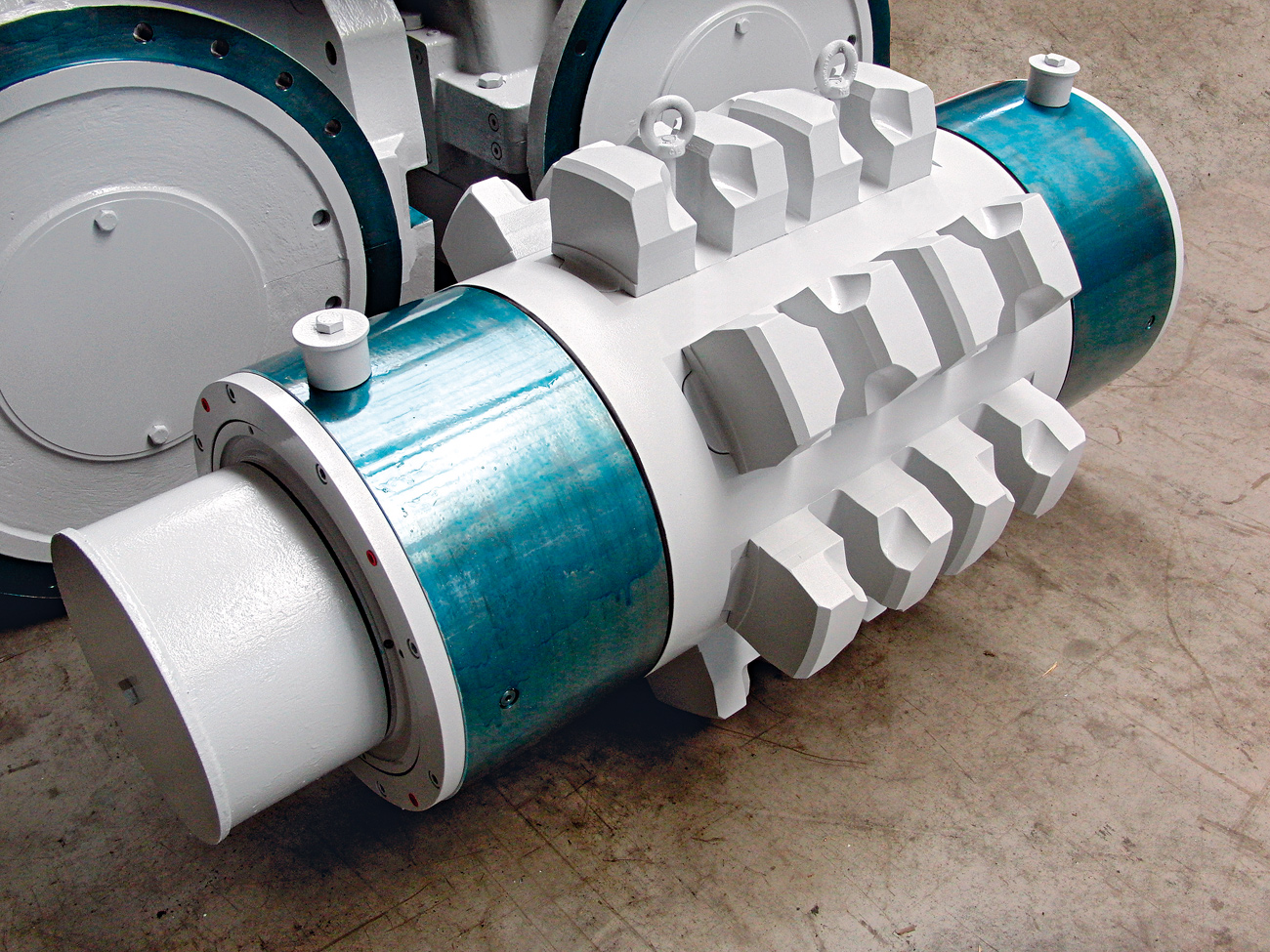
Fig. 9. A complete HB Shark Spocket with shifting for grease lubrication
Bild 9. Ein komplettes Kettenrad HB Shark Sprocket mit Verlagerung ausgeführt für Fettschmierung
In 2012 Halbach & Braun Industrieanlagen GmbH & Co. in Hattingen/Germany, which has almost 100 years experience in the design and manufacturing of chain conveyors, made an innovative step to improve the exchange of worn sprockets by changing only teeth bars instead of complete sprockets. This new design was successfully tested on a mine in China, proving advantages in handling and efficiency. Author: Dipl.-Ing. Heinrich Höhl, Halbach & Braun Industrieanlagen GmbH & Co, Hattingen, Deutschland Learn more

Advantages and Applications of Rail Haulage Systems in Underground Hard Rock Mining Operations
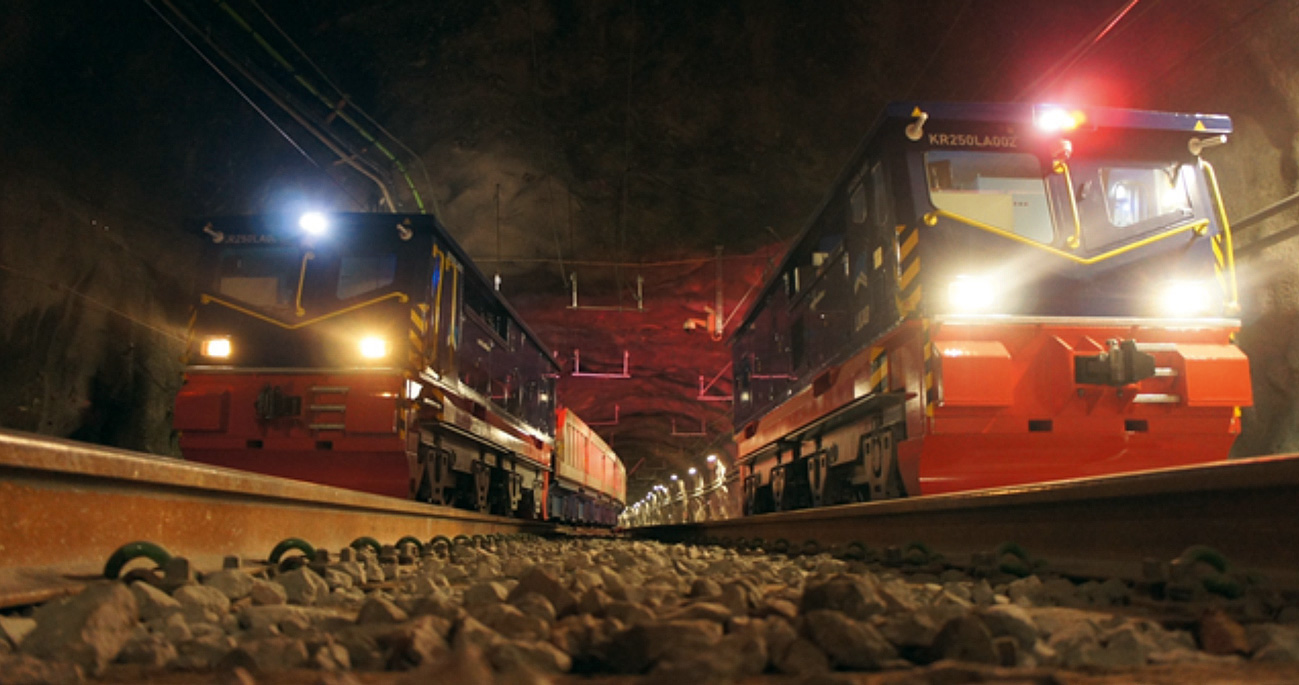
Fig. 2. Example of Schalke’s full automated rail haulage system at LKAB
Bild 2. Beispiel des vollautomatischen Schalke-Zugfördersystems bei LKAB
In the past twenty years, substantial efforts have been made to introduce improvements to rail haulage systems and to catch up with the advantages of the other methods of haulage and conveyance in underground hard rock mining operations. Modern high performance rail haulage systems eliminate the historical disadvantages and have been able to take over the ‘number-one’ position with regard to productivity, reliability, servicing and maintenance. Together with the global trend of going underground using bulk mining methods within hard rock mining this leads to an increasing usage of rail haulage systems. With regard to the choice of the most suitable haulage system it is necessary to analyze the advantages and disadvantages dependent on defined background conditions as well as to assess their economic influences and their ‘weighting’ within the overall context of mining operations. Therefore, an evaluation tool has been developed to identify the cost drivers of the various haulage systems through which especially the advantages but also the reduction of possible disadvantages of rail haulage for underground mining operation can be made transparent. Authors: Dr.-Ing. Dipl.-Wirt. Ing. Andreas Merchiers, Dr.-Ing. Gregor Brudek, Schalker Eisenhütte Maschinenfabrik GmbH, Bochum, Germany; Markus Dammers, M.Sc., Institute of Mining Engineering I (BBK1), RWTH Aachen University, Germany Learn more
FABERG – 93 Years of Mining Industry Standards
FABERG, the Herne-based mining standards committee, is part of the German Institute for Standardisation (DIN) in Berlin. As a joint institution of the German mining industry FABERG is supported by the Berlin-based VRB (German Association for Raw Materials and Mining) and in terms of its organisation and staff is affiliated to the Deutsche Montan Technologie (DMT) for Mining, Energy and the Environment. FABERG is responsible for national standardisation in the field of mining and also acts as a representative on European and international standardisation committees. It supports the introduction into all relevant areas of those German standards that are part of its specialised field. It has now been decided that FABERG will be disbanded at the end of 2015, some 93 years after its foundation in 1922. More than enough reason to look back on and take stock of its achievements. Authors: Prof. Dr.-Ing. Christoph Dauber, Vorsitzender des Kuratoriums, und Dipl.-Ing. Hans Georg Blasgude, Geschäftsführer des FABERG Normenausschuss Bergbau im DIN e.V Learn more

BGR Energy Study 2014 – Observations from a Coal-Industry Perspective
In December 2014 the Federal Institute for Geo-Sciences and Raw Materials (BGR) presented its new ‘Energy Study 2014’ that takes stock of ‘reserves, resources and the availability of energy supplies’ at national and global level in 2013. In publishing the study the BGR hopes to contribute to the public debate on Germany’s current and future energy supply situation by providing specialist information from its area of competence and in so doing to offer resource-specific advice to German industry and to the Federal Ministry of Economics and Energy (BMWi), a body that plays such a key role in this field. In the following paper the author examines the BGR Energy Study from the perspective of the German coal industry. Author: Dipl.-Ökonom Dr. Kai van de Loo, Bereichsleiter Volkswirtschaft und Wirtschaftspolitik, Gesamtverband Steinkohle e.V. (GVSt), Herne, und Mitglied des Vorstands der Arbeitsgemeinschaft Energiebilanzen (AGEB), Berlin Learn more
Editorial Issue 04_2015
Editorial Issue 04_2015
Editorial
This latest edition of Mining Report Glückauf will again seek to look beyond the horizon line of previous papers and following on from the special theme of final repository mining that appeared in the June edition will now focus on overseas mining activities. Innovation is the buzzword when it comes to developing the potential of Canada‘s mineral resources. Difficult conditions in the north of the country, mining depths of more than 2,500 m and tougher legislation on the environmental impact of mining operations all provide starting points for the market entry of German companies. And there are also opportunities for German suppliers in southern Africa, where there are huge reserves of mineral resources spanning the entire value-added chain. However we should not ignore the problems that may arise when seeking to establish business ventures in this region. These range from a lack of infrastructure to the tough competition that will come from established providers from other countries. What kind of strategy should German companies adopt when operating in a mining sector that is in a worldwide slump? Australia is now inviting attention from prospective market players, who will have to be aware of country-specific and legal realities as well as market circumstances. Before embarking on any mining venture it is essential to assess the intrinsic value of the project, and the ‚theory of constraints‘ is a good place to start. Of course focusing on economic and legal matters does not mean having to neglect the technical side of things. Daniel Schäfer reports on a value stream analysis that he carried out at Zinkgruvan mine in Sweden as part of his final dissertation paper at RWTH Aachen University. In 2014 the VRB (Federation of Mining and Mineral Resources) awarded him the Helmuth-Burckhardt prize for his examination performance. We also wish to be quick in paying our own tribute to these award winners by publishing their work in Mining Report Glückauf. This latest issue is rounded off with a description of developments in the field of deep-ocean mining and a review of German lignite in 2014. The report on the lignite sector, like that for the coal industry (Issue 2/2015), has been an established part of the editorial make-up of Mining Report Glückauf for many years. The ongoing debate on whether Germany should cease coal-fired electricity generation along with, or even before, the phasing-out of nuclear power only shows the short-sighted approach that has been taken when assessing the security of our energy supplies. Reports on the importance of coal will therefore continue to provide further arguments why this fuel will be indispensable for the economic development of our country for many years to come. With my best regards
Dipl.-Ing. Andreas-Peter Sitte Chief Editor Mining Report Glückauf, Herne
Topics Issue 04_2015
Topics Issue 04_2015
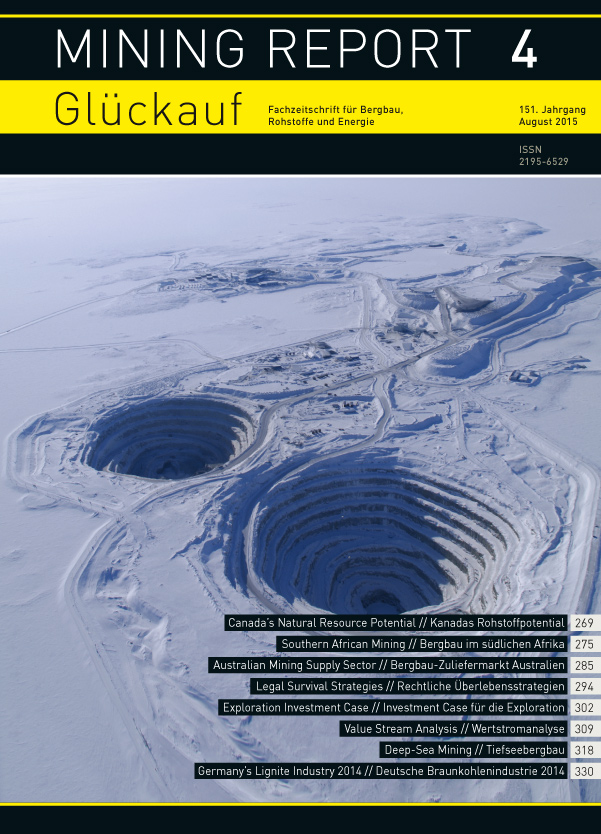
Innovation is the buzzword when it comes to developing the potential of Canada‘s mineral resources. Difficult conditions in the north of the country, mining depths of more than 2,500 m and tougher legislation on the environmental impact of mining operations all provide starting points for the market entry of German companies. And there are also opportunities for German suppliers in southern Africa, where there are huge reserves of mineral resources spanning the entire value-added chain. However we should not ignore the problems that may arise when seeking to establish business ventures in this region. These range from a lack of infrastructure to the tough competition that will come from established providers from other countries. What kind of strategy should German companies adopt when operating in a mining sector that is in a worldwide slump? Australia is now inviting attention from prospective market players, who will have to be aware of country-specific and legal realities as well as market circumstances. With my best regards, Dipl.-Ing. Andreas-Peter Sitte Chief Editor Mining Report Glückauf
Canada’s Natural Resource Potential and Recent Developments
“Innovation in Canada’s Mineral Development Model” was the theme of the 19th National Mining Week, which took place in Canada from May 11 to 15, 2015. The fact that a Mining Week is held demonstrates the important role mining plays in the lives of Canadians and the awareness for this sector in society. The theme reflects a trend as well as a commitment: to support the mining sector in its efforts to remain a global leader in minerals and metals, with innovation driving responsible and sustainable development of Canada’s natural resources, creating jobs and future prosperity. This article will present some of the main trends driving the development of Canada’s natural resources sector: Canada as a new supplier of strategic minerals such as rare earth elements; the expansion of exploration and mining efforts to the North and the Arctic; and the focus on innovation to meet technological and environmental challenges, including research to extend mining to depths greater than 2.5 km. Author: Dr. Bruno Wiest, Leitender Beauftragter für Wissenschaft und Technologie, Botschaft von Kanada, Berlin

The Potential of Southern African Mining Countries
Africa’s growing importance for the global economy is clearly visible in the increasing activities of companies from around the world. Countries such as France and the US have long been heavily represented in Africa, while others such as China, India and Brazil have been increasing their presence for more than a decade. German industry is also present, but is so far keeping a lower profile than in other world regions. Although German companies are well-equipped in many areas for success on the African market, they have so far avoided entering it. Yet numerous opportunities for German suppliers exist along the entire value-added chain, from exploration to processing. Opportunities particularly worthy of note are those in process optimisation, resource efficiency, technology development, modernisation measures for above and below ground, post mining, and education and further training. Author: Peter von Hartlieb, Bereichsleiter Netzwerk Bergbau, EnergieAgentur.NRW, Düsseldorf Learn more
The Australian Mining Supply Sector: Market Characteristics and Entry Strategies

Figure 1: Growth in GDP (1)
Bild 1: Entwicklung des BIP (1)
Australia‘s mining industry has reached the end of its super-boom period. Price collapses in the resource sector, caused by an oversupply on the world market and a decline in demand from China, have put an end to a capital-intensive investment phase that lasted more than ten years. The industry has now entered a phase of short-term targets where the main focus is on plant and process optimisation, cost cutting, productivity improvements and greater cost and energy efficiency. With the mining industry seeing an increasing number of insolvencies affecting both operators and suppliers, the decision to enter the Australian mining supply market should now be given serious consideration. Because of country- and market-specific circumstances it is essential that any market entry strategy is adjusted and aligned to the product or type of services involved. With lead-times to the contract award phase typically amounting to several years in this sector, such ventures require flexibility, good planning and a realistic investment horizon that is funded over several years. Author: Dr. Bernd Länger, Kompetenzzentrum für Bergbau & Rohstoffe der Deutsch-Australischen Industrie- und Handelskammer (AHK), Sydney/Australien Learn more
Value Stream Analysis of the Production Flow in the Zinkgruvan Mine
The Zinkgruvan Mine is Sweden’s southernmost mine located approximately 200 km south-west of Stockholm at the northern end of lake Vättern. The primary metal is zinc, secondary metals are lead, copper and silver. The Zinkgruvan Mining AB plans a 20 % increase of processed ore until 2022. This article examines the production processes and performs a value stream analysis of the production flow. The focus deals with implementing an Overall Equipment Effectiveness measurement and the simulation of the haulage capacity. The article is a conclusion of the author´s graduation paper at the Rheinisch-Westfälische Technische Hochschule (RWTH) Aachen. For his excellent examination he got the Helmuth-Burckhardt-Award by Vereinigung Rohstoffe und Bergbau (VRB), Berlin, in September 2014. Author: Daniel Schäfer M. Sc., Institute of Mining Engineering I (BBK I), Rheinisch-Westfälische Technische Hochschule (RWTH) Aachen, Aachen/Germany Learn more

Deep-sea Mining – a Future Source of Raw Materials?
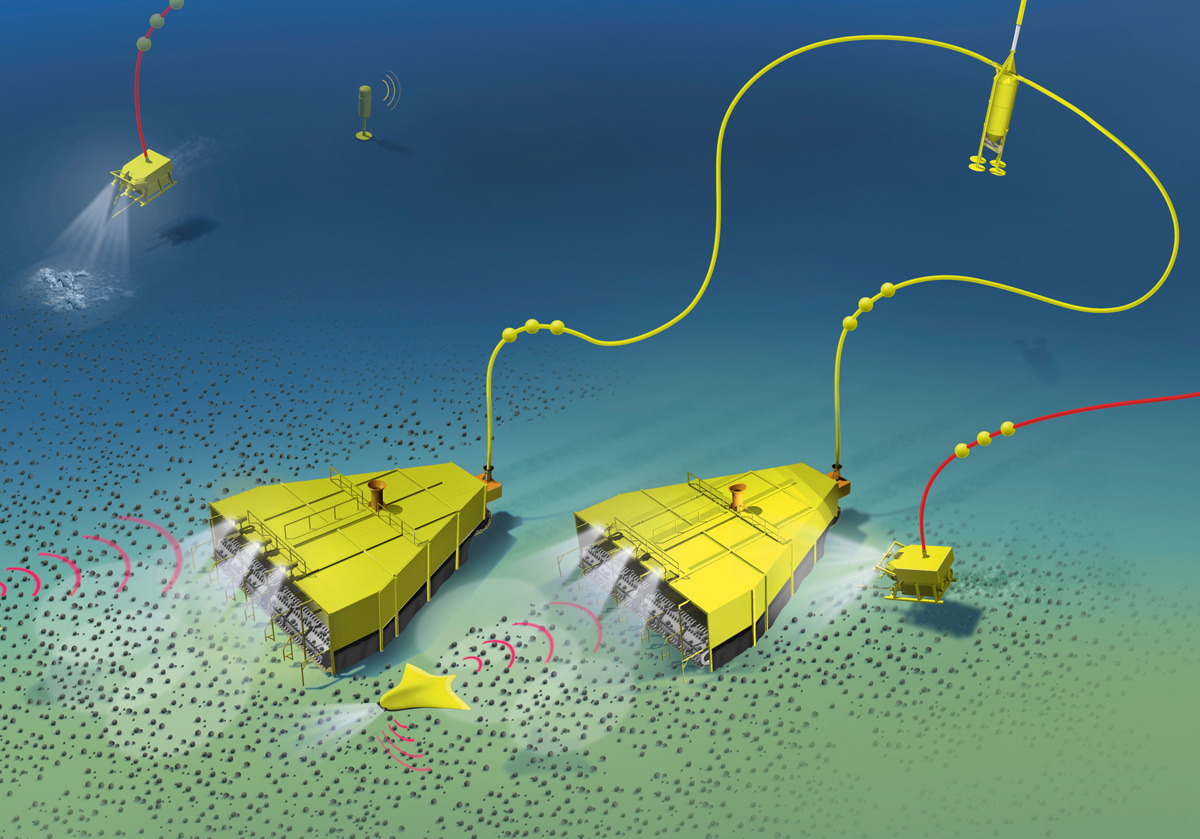
Fig. 5. Two self-propelled collectors are winning manganese nodules from the seabed. The crushed nodules are pumped via flexible pipes to a temporary storage they both share (top right), from where the ore-water composite is pumped via tubing to the productionship.
Source/Quelle: M.H. Wirth.
The rising global demand for metals is starting to focus greater attention on the extraction of marine mineral resources (MMR) from deep sea. The term MMR essentially covers three different types of formation: manganese nodules, cobalt-rich ferromanganese crusts and massive sulphide deposits. All three of these natural resources provide the potential basis for a whole range of different metals. Germany has developed an interest for the exploration of marine deposits. This paper outlines the types of deep-sea deposits available and their resource potential. It also describes the legal and commercial parameters involved and presents the challenges that will arise during the mining and extraction phase and the possible environmental impact of such operations. Authors: Dr. Michael Wiedicke, Arbeitsbereichsleiter Meeresgeologie/Tiefseebergbau, Dr. Thomas Kuhn, marine Lagerstättenmodellierung, Dr. Carsten Rühlemann, Leiter Exploration von Manganknollen, Dr. Annemiek Vink, umweltbezogene Untersuchungen, Dr. Ulrich Schwarz-Schampera, Leiter Exploration mariner Sulfide, Bundesanstalt für Geowissenschaften und Rohstoffe (BGR), Hannover Learn more
Germany’s Lignite Industry in 2014
From 2013 to 2014, Germany’s domestic lignite output dropped 2.6 % from 183.0 Mt to 178.2 Mt. The 2014 figure is equivalent to a net calorific value of 55.2 Mtce. Of the total output, 159.1 Mt, or some 89 %, was used in utility power plants for the public supply, i.e. 3.0 % less than in the previous year. In addition, 15.0 Mt was input in the factories of the lignite-mining industry to make solid products, while 2.1 Mt was used to generate electricity in mine-mouth power plants. Other sales of raw lignite and changes in stocks accounted for 2.0 Mt. Lignite made a 25.4 % contribution towards Germany’s total power generation in 2014. Authors: Dipl.-Volkswirt Uwe Maaßen, Geschäftsführer Statistik der Kohlenwirtschaft e.V., Köln, Dr. Hans-Wilhelm Schiffer, Executive Chair World Energy Resources, World Energy Council, London Learn more

Legal Survival Strategies in Anglo-Saxon Countries Exemplified by Mining Projects in Australia
Australia is one of the biggest mining countries in the world. In spite of the current recession, the mining industry has continuously grown throughout the past decades. This predictable continuing development in the upcoming decades can undoubtedly be traced back to Australia’s vast and often unexploited landmasses. The country possesses about 10 % of the world’s known coal deposits. It further harbors great amounts of iron ore, bauxite and copper. Australia plays an important role in the global supply of raw materials. Many German companies are toying with the idea of entering Australia’s large and attractive market that is characterised by gigantic and continuously growing reserves and compels due to the possibility of outstanding revenues. Yet, how is it possible to minimize the risk and the expenditure for expansive contracts, exorbitant procedures and elaborate rules governing compliance? This article will provide answers to these questions. It is mainly based on a lecture held by the author at the Australian embassy in Berlin on the 25th of March 2015 entitled “The Future of Mining in Australia. Technology. Innovation. Sustainability. Finance.” Author: Dr. Dr. h. c. Wolfgang Babeck, Partner der Rechtsanwaltskanzlei Buse Heberer Fromm, Sydney/Berlin, und adjunct Professor an der Law Faculty der Bond University, Robina/Australien Learn more
Making an Exploration Investment Case
Exploration expenditure is closely linked to commodity prices and in the current low commodity price environment pressure on exploration budgets and reduction in spending has been dramatic. This calls for making robust business cases for exploration spending to demonstrate value-added to senior management. This contribution examines exploration and related resource definition in the context of the mine production value chain which is conceptualized by means of Theory of Contraints. This framework allows to link uncertainty around the deposit being mined with production costs and hence deriving a value to improved resource definition. A demonstration study in a bulk commodity shows the application of the framework with impressive cost savings and return on capital achievable, supporting a business case for considerable resource definition spending. The Value of Information concept is introduced to help establishing upper bounds for expenditure on a project. Author: Dipl.-Geol. Volker Osterholt (MPhil. Geostatistik), Principal Consultant, Osterholt Consulting, Darmstadt, Germany Learn more
Editorial Issue 03_2015
Editorial Issue 03_2015
Editorial
North Rhine-Westphalia is mining country
The withdrawal from coal mining and the phasing out of nuclear energy is a watershed for mining and energy production in North Rhine-Westphalia and in Germany as a whole – yet this double withdrawal does not spell the end for the energy sector or for the innovative capacity of this region. Though the exit from nuclear energy will certainly cause problems in some areas, the restructuring process taking place as part of the energy transition will create real opportunities for Germany’s number-one ‘energy state’. Global demand for energy, and more particularly for intelligent and efficient energy production technologies, continues to grow. And it is mining that provides the basis for the energy industry and the expansion and redevelopment of the infrastructure that goes with it.
Nuclear energy has been used for generating electricity for more than 60 years, and yet the question of how to dispose of its highly radioactive waste remains largely unresolved. In Germany the former Konrad iron ore mine at Salzgitter in Lower Saxony is currently being converted for use as a final repository for low to medium-level radioactive material.The Morsleben radioactive-waste storage facility (ERAM), which was established in an old salt mine, dates back to the GDR days and is now to be closed down and permanently sealed, while the Asse research mine was also developed at a former salt mining site. Investigations are currently under way at the Asse II shaft site to plan a retrieval system for the radioactive waste that was deposited there for research purposes. No decision has yet been taken on the future of the Gorleben facility. Nevertheless, here too mining engineering is at the forefront of the project.
In the light of this new task to identify, explore and prepare a suitable location for the permanent disposal of highly radioactive material, and one that can accommodate all types of host rock, Germany now finds that it has a fresh challenge on its hands – and this is where service companies and mining suppliers all over North Rhine-Westphalia could well have an important contribution to make. The techniques required for such projects have been developed and tested over hundreds of years and under all kinds of conditions and this expertise has now been pooled by the Mining Network that is part of the EnergieAgentur.NRW centre of excellence. Germany has an advantage over many other European countries when it comes to planning and building permanent disposal sites for highly radioactive waste in that it can draw on a significant body of experience that has been acquired and exploited over many years by an active mining industry.
The innovative potential and commitment of companies in North Rhine-Westphalia is clearly reflected in the efforts that have been made to expand the know-how needed to meet the broad-ranging radiation protection requirements that apply to the design and operation of nuclear waste repositories.
We are especially grateful to DMT GmbH & Co. KG for providing the guest editorial for this edition of Glückauf. And we hope that this latest publication will have plenty of information to interest our readers and perhaps some stimulating new business ideas too.
Dr. Eckehard Büscher
EnergieAgentur NRW
Head of Mining and Energy Networks
Leiter Netzwerke Bergbau- und Energiewirtschaft
www.energieagentur.nrw.de/bergbau
Topics Issue 03_2015
Topics Issue 03_2015
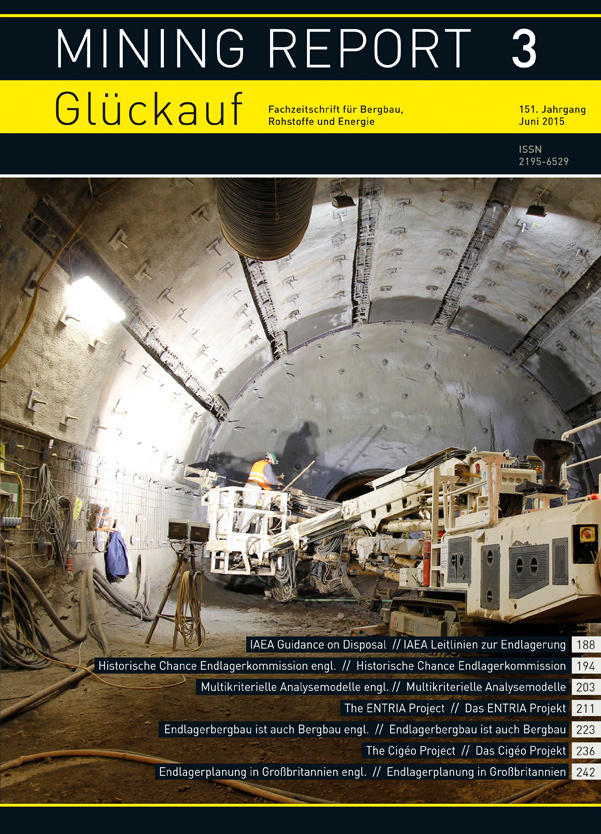
The withdrawal from coal mining and the phasing out of nuclear energy is a watershed for mining and energy production in North Rhine-Westphalia and in Germany as a whole – yet this double withdrawal does not spell the end for the energy sector or for the innovative capacity of this region. Though the exit from nuclear energy will certainly cause problems in some areas, the restructuring process taking place as part of the energy transition will create real opportunities for Germany’s number-one ‘energy state’. Global demand for energy, and more particularly for intelligent and efficient energy production technologies, continues to grow. And it is mining that provides the basis for the energy industry and the expansion and redevelopment of the infrastructure that goes with it.
Mit freundlichem Glückauf,
Dr. Eckehard Büscher, EnergieAgentur NRW
Issue 03/2015
The ENTRIA Project: Selected Disciplinary and Interdisciplinary Research Topics
- Final disposal in deep geological formations without any arrangements for retrieval,
- disposal in deep geological formations with arrangements for monitoring and retrieval, and
- (prolonged) surface (or near-surface) storage.
- Surface storage,
- reference concepts for emplacement in deep geological formations with retrievability and monitoring,
- radiation exposure and justification of measures,
- interdisciplinary perspectives on dose limits,
- comparative studies on nuclear waste governance,
- nuclear waste governance in Switzerland,
- public involvement and the German Site Selection Act, and
- citizens’ jury.
- Final disposal in deep geological formations without any arrangements for retrieval,
- disposal in deep geological formations with arrangements for monitoring and retrieval, and
- (prolonged) surface (or near-surface) storage.
The repository commission: a historic chance to solve an ongoing conflict
Learn moreIAEA guidance on disposal and siting
Learn more
Can multi-criteria analysis models support the site selection for a repository for heat-generating waste?
Disposal facility building also is mining engineering – Germany can tap into this expertise and planning potential
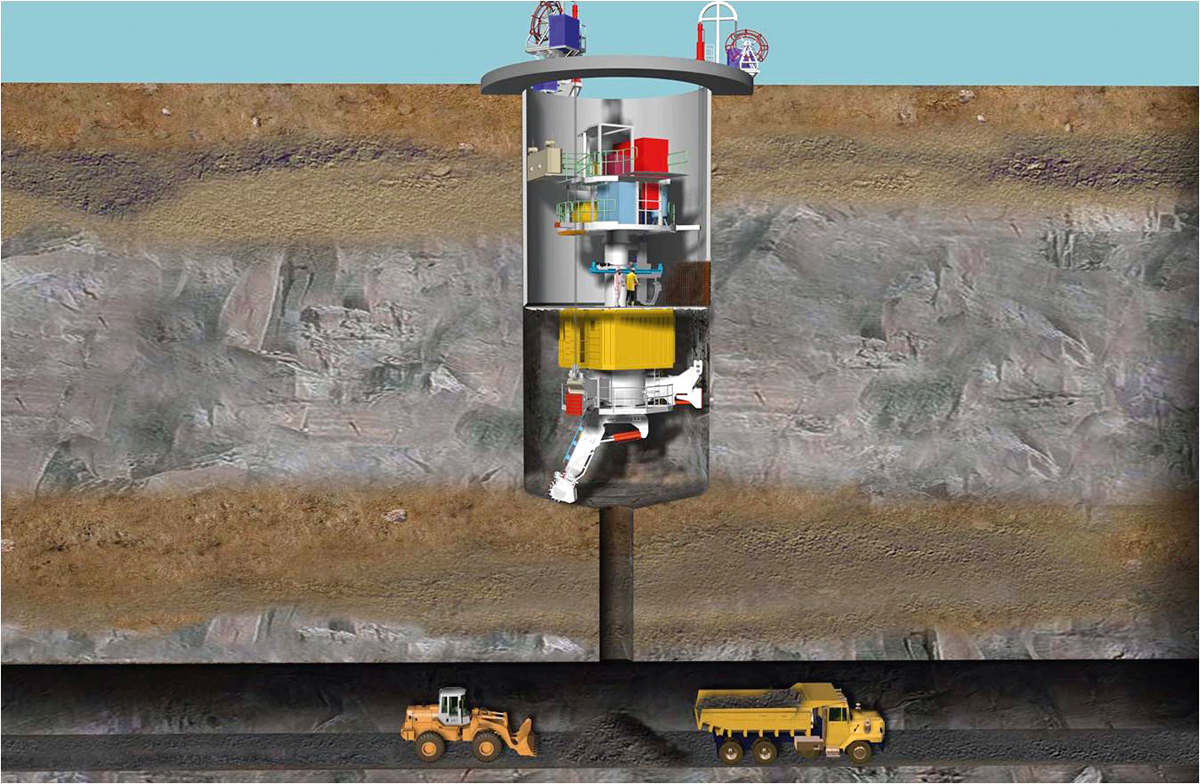
Fig. 1. Shaft sinking with a shaft milling machine.
Bild 1. Beispiel einer Schachtherstellung mit Schachtfräse.
Source/Quelle: Thyssen Schachtbau GmbH

Cigéo: the French deep geological repository for radioactive waste – excavation techniques and technologies tested in underground laboratory and forecasted for the future construction of the project
Learn moreDeep geological repositories in the UK: Current underground planning and competency requirements for waste packaging systems
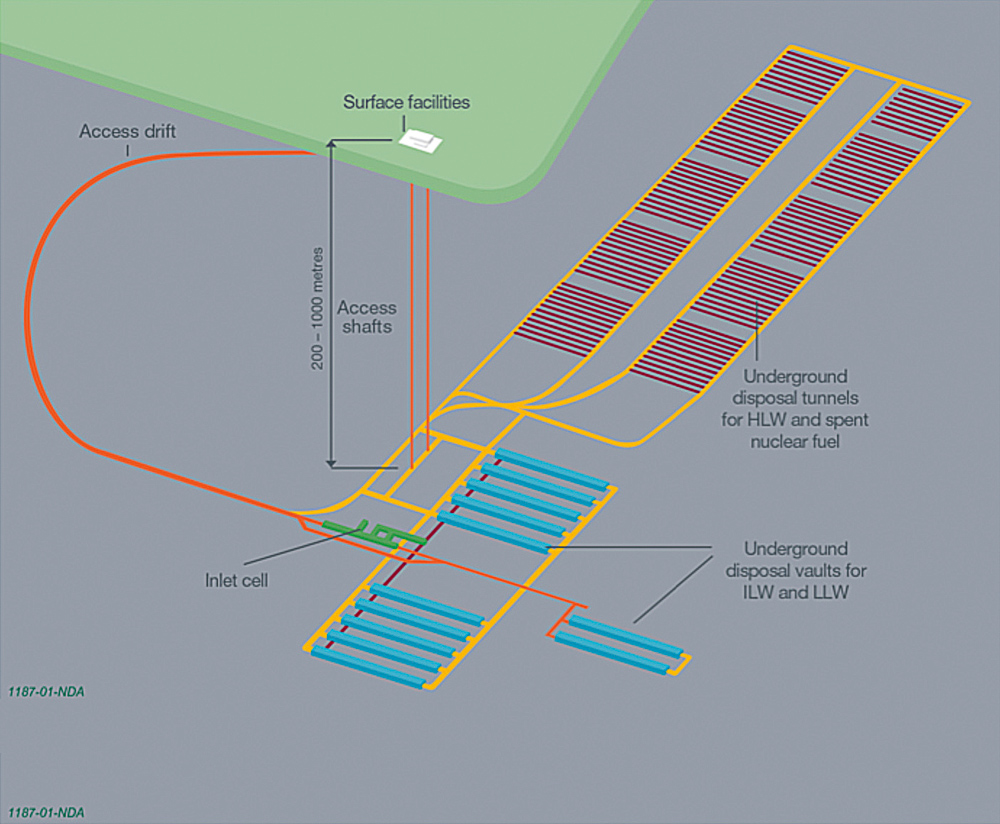
Fig. 1. Proposed layout of a geological disposal facility
Bild 1. Schema eines Endlagers über und unter Tage
Source/Quelle: NDA 2010 (1)
Editorial Issue 02_2015
Editorial Issue 02_2015
 Andreas-Peter Sitte (Chief Editor Mining Report Glückauf)
Andreas-Peter Sitte (Chief Editor Mining Report Glückauf)
Editorial
Each year the Clausthal University of Technology opens the conference season with the first in a series of internationally acclaimed events organised by Germany‘s mining universities. This year‘s programme started with the Drilling and Blasting Colloquium on 23 and 24 January. I have selected two papers from the conference for publication in the current edition of Mining Report Glückauf, whose special theme this time is ‚drilling and shotfiring‘. The first paper presents the latest developments and future trends in small-bore drilling for shotholes and rockbolting, while the second deals with the drivage of a deep-level face start-up road at the RAG-operated Prosper-Haniel colliery. The same theme is also taken up in a paper on the construction of two high-pressure water barriers at Ibbenbüren mine (RAG Anthrazit Ibbenbüren GmbH). The 19th Drilling and Blasting Colloquium was special in other respects in that it marked the last occasion when the co-founder, Prof. Dr Heinz Walter Wild, would be making a presentation at the event. At this point it should also be mentioned that Prof. Wild lectured in ‚blasting techniques‘ at the Clausthal University of Technology Mining Department from 1974 to 1995 and so was probably responsible for helping more than a few of our readers start their professional career. As well as presenting the latest developments in mining technology Mining Report Glückauf will in the future also be reporting on subjects that are not directly associated with the mining industry but do have close links with it. One such topic is the use of coal for electricity generation and the balanced approach to industry-related CO2 emissions. Although the EU has specified a minimum 80% reduction in greenhouse gas emissions by 2050, fossil fuels will still be needed for energy production in Europe, and for other industrial processes, for many years to come. And Carbon Capture and Storage/Carbon Capture and Utilisation technology (CCS/CCU) could well prove hugely important in this area. The European Commission‘s latest proposal, which is entitled ‚Horizon 2020‘, supports developments aimed at disposing of CO2 emissions via the methanol path. The current edition contains three papers that deal with this theme: the first presents the activities of the Government of North Rhine-Westphalia in this area, the second examines CCS/CCU technology from a German and European perspective and the third discusses the efforts that are being made in China, the world‘s largest coal producer, towards more efficient coal utilisation. The technical papers in the April edition of Mining Report Glückauf traditionally round off with a report on developments in the German coal market over the previous year. I am pleased to say that this is one tradition we intend to keep. With my best regards
Dipl.-Ing. Andreas-Peter Sitte Chief Editor Mining Report Glückauf, Herne
Topics Issue 02_2015
Topics Issue 02_2015
Mining is and will remain an important international industry. The major globally-positioned mining companies are in need of trained personnel, as even the world‘s main mining regions suffer from a skills shortage in this area. This creates wonderful career opportunities for German-trained engineers and technicians. This is why we think it is very important to take a global view of what is happening in the mining sector beyond our shores and to look at the developments under way elsewhere in the world. This will work both ways, as our readers in other countries will also gain an insight into the realities of the German mining industry.
With my best regards
Andreas-Peter Sitte Chiefeditor Mining Report
Drilling equipment for drifting and rockbolting – current developments and future trends from a manufacturer and user perspective
Over the years underground drilling equipment for drifting and rockbolting were primarily developed with a view to increasing the penetration rate. The computer technology that gradually became available was subsequently employed for control and automation of the drilling systems. This ongoing development was not continuously pursued in more recent times until it became apparent that because of limitations to the drilling speed users and manufacturers alike were now presented with a new set of challenges.

Planning and excavation of a special-profile, deep- level face start-up road at Prosper-Haniel colliery
The deepening of number 10 shaft and an extensive programme of development work has given Prosper-Haniel colliery access to new reserves of coal on mine level 7, at a depth of 1,159 m. In order to extract the gas outburst-prone Zollverein 1/2 seam in the Prosper North district, where the coal is up to 4.65 m in thickness, it was necessary to purchase a new set of ‘category C’ shield supports. This paper, which is based on the author’s presentation to the Drilling and Shotfiring Colloquium held at Clausthal University on 24 January 2015, describes the requirements imposed on the face start-up roads, the planning and implementation work and the operational experience acquired in the course of the shotfired drivage phase. Learn more …

Constructing underground water barriers in areas subject to ground movement – a real engineering challenge
Between 2011 and 2014 two new high-pressure water barriers were constructed at Ibbenbüren Mine, RAG Anthrazit Ibbenbüren GmbH, to provide a long-term seal capable of resisting the ground movements expected as a result of the planned extraction of the Beustfeld panel. Two water stoppings had already been erected at the end of the 1970s for the hydrological separation of the western and eastern districts at a depth of about 300 m, the aim being to dam the water in the western district to about + 65 m. The two stoppings now had to be renewed, mainly to counter the influence of the approaching mine workings in the eastern district. The new water barriers with their special sealing segments were completed on time and without accident or incident in the summer of 2014. The two high-pressure dams were of a kind that had never before been constructed anywhere in the German coal industry. Learn more …
Contribution of Domestic Methanol Production by applying Carbon Capture Technologies and the Future Energy Mix in NRW, Germany and the EU with Regard to Security Aspects of Supply
As an alternative to petroleum the methanol production via synthesis gas – based on natural gas or biomass – may be a viable solution. But special attention should get the „green methanol“. Relevant research is to be supported, how to really produce out of CO<sub>2</sub>, sunlight and water, an important chemistry source of energy and basic raw material. There are already processes in place to use methanol as a raw material for polyethylene and polypropylene, and hence for plastics and many other things. The government of North Rhine-Westfalia supports the chemical industry to find innovative ways to a strong future. The path of ecological renewal of the industry is supported by the state government. The state government welcomes and supports a currently on-going Enquete- Commission on the future of the chemical industry in North Rhine-Westphalia. The subject of methanol economy was and is subject of discussions in the Enquete-Commission. This paper is a conclusion of the author´s speech on the Methanol Technology and Policy Congress at 3 december 2014 in Frankfort/M. in Germany. Learn more …
Climate-friendly use of coal in power plants and in energy-intensive industrial facilities with carbon capture including the CO2 disposal in the methanol path
Every CO2 reduction strategy should commence with the increase in efficiency of existing power plants followed by investments in state-of-the-art technologies and most advanced plants. EURACOAL’s three step strategy therefore starts in a logical sequence with the replacement and modernisation of existing power plants. In a second step application of state-of-the-art technologies would increase the average efficiency to 45 %. In a third step the most advanced plants can reach efficiencies of about 50 %. Increasing average efficiencies step by step could reduce CO2 emissions per kWh by 21 %, 33 %, or even 40 %. CCS is less a technical challenge than a political hurdle, as there is a growing resistance against CCS and in addition a CCS infrastructure is not available. Therefore making CCS a prerequisite for further coal use is equivalent to a stop of coal usage. A climate-friendly use of coal in power plants and in energy-intensive industrial facilities with CCU in the methanol path is feasible. But still a lot has to be done to make CCU a policy option in Germany and the European Union. Starting point of a CCU strategy could be the third STOA policy option, i. e. a focus on niche markets. Electricity from wind farms without or with limited access to the electricity grid, solar electricity generated in isolated but sun-rich regions that cannot be fed in to the grid or “cheap” excess renewable electricity could be used to produce hydrogen by electrolysis. Methanol production in a carbon capture and utilisation strategy should not be viewed just as an alternative method of producing methanol. Of course at present this is not a competitive alternative to conventional methanol production. It should rather be viewed as a means to reduce CO2 from the atmosphere and to recycle CO2 to products which can be used in the transport sector, hereby increasing security of supply and indigenous value added. Learn more …
Developing high-efficiency, low-carbon, clean coal in china
In the last few decades, China has dramatically expanded access to energy and, as a result, has achieved nearly universal electrification (Figure 1). Although this accomplishment is notable, China’s energy mix is facing several pressing issues with important domestic and global implications. China is coal-rich and, for this reason, continues to rely on coal for the majority of its primary energy (over 70 %), resulting in cost, reliability, and energy security benefits. However, coal resources are being consumed rapidly. China has built, and is continuing to grow, massive industries that hinge on the availability of coal; therefore, coal conservation through more efficient utilization is in the nation’s best interest. This article was originally published in Cornerstone (Vol. 2), Issue 3, 2014, p. 29 – 33 (www.cornerstonemag.net) Learn more …
The german coal situation 2014
The year 2014 was marked by a period of stagnation in the international coal market, the first in a number of years. In Germany there was a noticeable fall in coal consumption, mainly due to the decline in electricity production. Here the national energy transition is now making its impact felt and this has had a negative effect on coal use. Political decisions would indicate a further significant downturn in this sector in the years ahead. The year 2014 saw no more pit closures in the German coal industry, which is now in its run-down phase and has only three active collieries still in operation. However, the next closure is planned for the end of 2015 and the industry is already well advanced in its plans for the post-mining era. Learn more …
Editorial Issue 01_2015
Editorial Issue 01_2015
Editorial
Glückauf Magazine, which was started by the Association for Mining Interests (Vbl), was first published on 1 January 1865 as a supplement to the Essener Zeitung. The Vbl soon set up its own publishing house for the magazine. The Glückauf publishing company produced the magazine for many years thereafter and developed it into an organ of the coal mining industry. Sadly the German coal industry has been contracting for a number of decades and the list of subscribers and advertisers supporting the journal has continuously declined as a result. The ensuing financial problems saw Glückauf first being taken over by VGE-Verlag in 2006 and then by Verlag Ernst & Sohn in 2013. Over the next months it became apparent that the magazine, now being published under the name Mining Report Glückauf, once again would have to be put under new management if it was to have a sustainable and viable future. This situation, and the fact that the GVSt (German Coal Association) – with which the Vbl had merged a few years earlier – had long been editorially involved in producing the magazine, ultimately persuaded the Coal Association that it should take back the running of the journal. Glückauf Magazine has therefore, in many ways, come back home. In view of the difficult environment in which the mining industry now has to operate we at GVSt are naturally only too aware of the fact that we have taken on something of a challenge. Our aim is to be a partner to the German coal industry until it finally ceases production at the end of 2018. At the same time we intend to give Mining Report Glückauf a future beyond 2018 by bringing on board fresh new themes, such as activities in the post-mining era, the development of former mining sites, coal utilisation and so on. Each edition will seek to focus on specific subject areas and will be published in English and in German throughout. As before, special editions of Mining Report Glückauf will also be brought out in Chinese and in Russian for distribution in those countries. Occupational health and safety is a particularly important topic for us. This theme will occupy a segment of its own and in this regard we shall be working closely with ISSA Mining, which is the mining section of the International Social Security Association (ISSA). Mining Report Glückauf will therefore be an organ both of the GVSt and of ISSA Mining. Technology, energy supply and raw materials will continue to play a key role regardless of the planned cessation of domestic coal production. We are living in interesting times, as the ongoing debate on the implementation of the energy transition shows, and in technology terms the German mining industry has gained a head start on the rest of the world. This has to be protected, not least for the good of our supplier sector where the companies involved have built up a leading position on the world market. What is more, the German mining industry has become a centre of expertise and plays an active role in the field of international consultancy. Germany has always been a mining country and it will remain so. Lignite, potash, rock salt, oil, gas, earth and stone are all extracted here, and ore mining has now been resumed again. With this fact often being overlooked we can see that this sector is in need of even greater news coverage than ever. As before, the magazine will continue to put greater focus on R&D activities and on the advances being made in this area. Without the groundwork that is done at our mining universities in Aachen, Bochum, Clausthal and Freiberg the mining industry could never have achieved the level of technical development we have seen. And we will still need technical progress of this kind if we are to advance further. All this is connected to the theme of education and training. Mining is and will remain an important international industry. The major globally-positioned mining companies are in need of trained personnel, as even the world‘s main mining regions suffer from a skills shortage in this area. This creates wonderful career opportunities for German-trained engineers and technicians. This is why we think it is very important to take a global view of what is happening in the mining sector beyond our shores and to look at the developments under way elsewhere in the world. This will work both ways, as our readers in other countries will also gain an insight into the realities of the German mining industry. With my best regards
Dipl.-Ing. Andreas-Peter Sitte Chief Editor Mining Report Glückauf, Herne
Topics Issue 01_2015
Topics Issue 01_2015
Mining is and will remain an important international industry. The major globally-positioned mining companies are in need of trained personnel, as even the world‘s main mining regions suffer from a skills shortage in this area. This creates wonderful career opportunities for German-trained engineers and technicians. This is why we think it is very important to take a global view of what is happening in the mining sector beyond our shores and to look at the developments under way elsewhere in the world. This will work both ways, as our readers in other countries will also gain an insight into the realities of the German mining industry.
With my best regards
Andreas-Peter Sitte Chiefeditor Mining Report
Has Mining Report Glückauf a future? Findings of a discussion session held at the “150 years of Glückauf” symposium
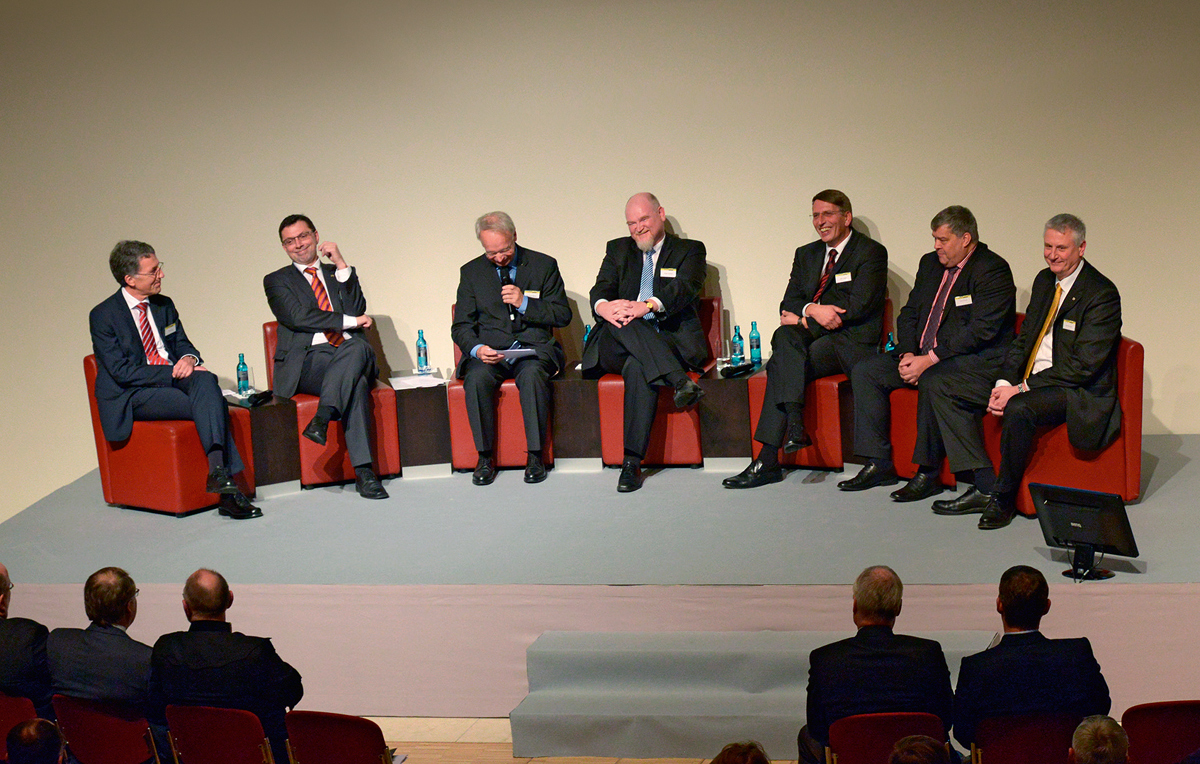 The mining journal Glückauf, which was founded by the Association for Mining Interests (VbI) of Lower Rhine and Westphalia, first appeared on 1 January 1865 as a supplement to the Essener Zeitung. When the last edition was published with volume number six in 2014 the journal had been in existence for 150 years. It was against this background that the German Coal Association (GVSt) in Herne and Berlin-based Verlag Ernst & Sohn, which had published the magazine up to the end of 2014 under the name Mining Report Glückauf, decided to arrange a joint technical and scientific symposium at the Philharmonie Essen on 12 November 2014. More than 330 key technical and managerial personnel from the mining and energy sectors, mining supplier companies, trades unions, employee organisations and welfare associations had accepted the invitation to share in an interesting look back over some 150 years of industrial history. In addition to the speeches and presentations, which were reported on in some detail in the previous edition of the magazine (1), there was also a discussion session focussing on the requirements and expectations that should be met by a modern mining magazine. This paper will attempt to summarise the results of this debate.
The mining journal Glückauf, which was founded by the Association for Mining Interests (VbI) of Lower Rhine and Westphalia, first appeared on 1 January 1865 as a supplement to the Essener Zeitung. When the last edition was published with volume number six in 2014 the journal had been in existence for 150 years. It was against this background that the German Coal Association (GVSt) in Herne and Berlin-based Verlag Ernst & Sohn, which had published the magazine up to the end of 2014 under the name Mining Report Glückauf, decided to arrange a joint technical and scientific symposium at the Philharmonie Essen on 12 November 2014. More than 330 key technical and managerial personnel from the mining and energy sectors, mining supplier companies, trades unions, employee organisations and welfare associations had accepted the invitation to share in an interesting look back over some 150 years of industrial history. In addition to the speeches and presentations, which were reported on in some detail in the previous edition of the magazine (1), there was also a discussion session focussing on the requirements and expectations that should be met by a modern mining magazine. This paper will attempt to summarise the results of this debate.
Modern freeze technology in action as five shafts are sunk at two project sites
Thyssen Schachtbau GmbH, based in Mülheim an der Ruhr, has for the last five years been increasingly engaged in drilling and freeze-shaft sinking operations in the Russian Federation. A whole range of projects of this kind have been delivered during this period. The most notable of these has been a shaft sinking in the Perm region and another in the Volgograd area, both of which were commissioned by the Russian chemical company EuroChem. In the Perm -region freeze technology was employed for sinking two potash shafts for the Usolski Potash Combine. The freeze holes employed here were drilled to a depth of 270 m. After the freeze process had been completed the company used an innovative thawing technology for the first time in order to reduce theice-wall around the shafts as quickly as possible after the shaft lining had been installed, the aim being to speed up the project‘s progress. In the province of Volgograd three shafts are currently being sunk at the Gremyachinski GOK potash mining complex, each of these featuring a world record-setting uninterrupted freeze depth of 820 m. In each of the projects completed to date modern and innovative drilling, ground-freezing and thawing technology was successfully employed and as a result the client‘s requirements were met in full. Thyssen Schachtbau GmbH will continue to develop technical equipment and calculation methods for applications of this kind so that highly challenging shaft construction projects of this type can be successfully delivered in the years ahead. Learn more …
Optimization of mucking and hoisting operation in conventional shaft sinking
The mostly applied shaft sinking method is conventional shaft sinking by drilling and blasting. Using this method, almost any shaft geometry is feasible and challenging ground conditions can be sunk through with acceptable sinking performances. Particularly mucking and hoisting operations of the sinking cycle have a relevant impact on sinking performance and offer a considerable optimization potential. Nevertheless further developments concerning sinking performance are only rarely noticeable over the last decades. At the beginning, this paper discusses parameters influencing mucking and hoisting performance. Furthermore, it is shown with assumed sinking scenarios that the selection of appropriate mucking equipment reduces mucking time significantly. The paper ends with concepts of pneumatic loading technology that offer additional options to improve sinking performance.
Leran more …
Shaft filling at RAG – technical options for future requirements
The colliery closure programme under way in the German coal industry has also involved the permanent filling of mine shafts after underground operations have come to an end. The chosen filling technique depends very much on the future requirements that the shaft will have to meet. At RAG-operated sites the fill column in the disused shaft becomes a technical structure that has to take on important functions associated with the coal industry‘s long-term burdens and responsibilities. The planning, execution and monitoring of these shaft filling measures represent a real challenge for everyone involved. Learn more …

Shaft sealing concepts for high-level radioactive waste repositories based on the host-rock options rock salt and clay stone
Unlike the shaft barriers used for the dry preservation of former mine workings and underground storage sites, shaft seals designed for radioactive-waste repositories must also fulfil additional requirements associated with the design diversity of the sealing system. This diversity makes use of the simple redundancy principle in order to prevent the proliferation of defects. In practice this means combining several sealing elements made from different materials or from materials with different properties. The R&D project, Shaft sealing systems for final repositories for high-level radioactive waste (ELSA) – phase 2: concept design for shaft seals and testing of the functional elements of shaft seals‘, which was funded by the Federal Ministry for Economic Affairs and Energy (BMWi), set out to investigate potential sealing elements for the two host-rock options rock salt and mudstone. This paper combines the text that the authors presented at the First International Freiberg Shaft Colloquium held at the Freiberg University of Mining and Technology on 01.10.2014 with a presentation on the sealing elements that were investigated as part of the R&D project. Learn more …
Energy reference projection for Germany to 2030/2050
Introduction In July 2014 the Federal Ministry for Economic Affairs and Energy (BMWi) in Berlin published a new Energy Reference Projection for Germany (1). This study was carried out for the BMWi by the Institute of Energy Economics (EWI), Cologne, the Institute of Economic Structures Research (GWS), Osnabruck, and the Economic Research Institute AG, Basel and Berlin, under the title‚ Development of energy markets – energy reference projection‘. The three institutes had already produced case scenarios for the Federal Government back in 2010 and 2011. The current energy reference projection prepared by EWI, GWS and Prognos contains in particular a ‚conditional projection‘ with a timeline to 2030, in accordance with the existing and foreseeable framework conditions and trends in the German energy market. It therefore essentially raises the central question: ‚What is set to be the most likely energy-policy development by the year 2030?‘ Learn more …
